Embark on a spiritual journey in Koyasan, Japan. Stay overnight at a traditional temple and immerse yourself in the tranquility and beauty of this sacred mountain town.
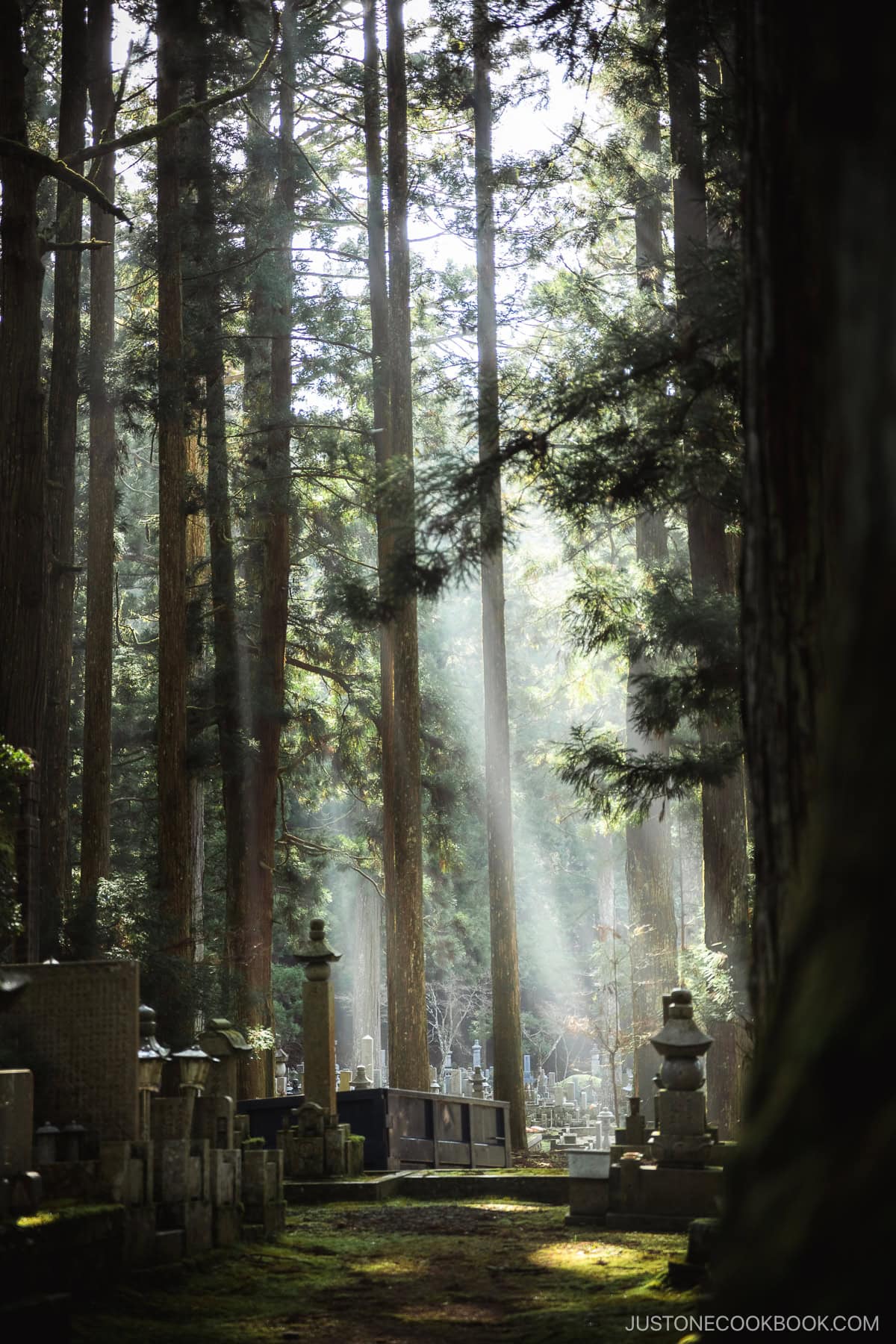

Set deep within Wakayama’s serene mountain ranges lies Koyasan (Mount Koya), one of Japan’s most sacred areas. Founded in 816 by monk Kobo Daishi, also known as Kukai (774 – 835 AD), the mountaintop sanctuary is the spearhead of Shingon Buddhism in the country. The area’s beauty and serenity have welcomed emperors, feudal lords, and politicians for centuries. Now, visitors can soak in Koyasan’s charm while staying in a temple lodging.
In 2004, along with the Kumano Sanzan and connecting pilgrimage routes, Koyasan was designated a UNESCO World Heritage site as “Sacred Sites and Pilgrimage Routes in the Kii Mountain Range.” I had the pleasure of visiting and staying in a sacred temple to gain further insight into Koyasan’s compelling history.
How to Get to Koyasan
Aside from by car, Koyasan is most accessible by train from Osaka Namba Station. Board the Limited Express Nankai Koya Line towards Gokurakubashi Station, which takes approximately 1 hour and 20 minutes and costs 1,720 yen one way (prices in 2024). There is also an express or rapid express train, which takes around 1 hour and 40 minutes and costs 930 yen one way.
After arriving at Gokurakubashi Station, take the cable car to Koyasan Station, which takes 5 minutes and costs 500 yen. Finally, take a 10-minute bus ride to Senjunbashi stop, which costs 220 yen one way and will take you to the center of the town.
World Heritage Ticket
If you plan to travel this route, I highly recommend buying the Koyasan World Heritage Ticket. This rail pass grants you access to a round trip to Mount Koya, unlimited bus travel in the area, and discounted tickets to selected attractions.
You can purchase an online digital ticket for 3,140 yen, but it does not give you access to the limited express train from Namba. You also do not get a discount admission at Kongobuji.
For those who prefer a traditional approach, a paper ticket can be easily obtained at one of the manned ticket offices in Namba. A regular ticket costs 3,540 yen, and a limited express ticket costs 4,090 yen. Child tickets are available at 50% of the price. Whether you’re planning a day trip or an overnight stay, these tickets are a convenient and worthwhile investment.
If you’re traveling from a different area, consider the World Heritage Koyasan One-Day Free Ticket. Priced at 1,100 yen for adults and 550 yen for children, this ticket offers unlimited 24-hour access to buses within the Koyasan area. It’s a great option for those planning to explore the area extensively in a day.
Danjo Garan
The central temple complex, Danjo Garan, was the first site Daishi built after establishing Koyasan as a monastery. It’s comprised of approximately 20 temples and smaller buildings, each with its own unique architecture and purpose. Surrounded by eight mountain peaks, Daishi thought Koyasan was the real-life representation of the mandala (Sanskrit for “circle”), portraying the universe.
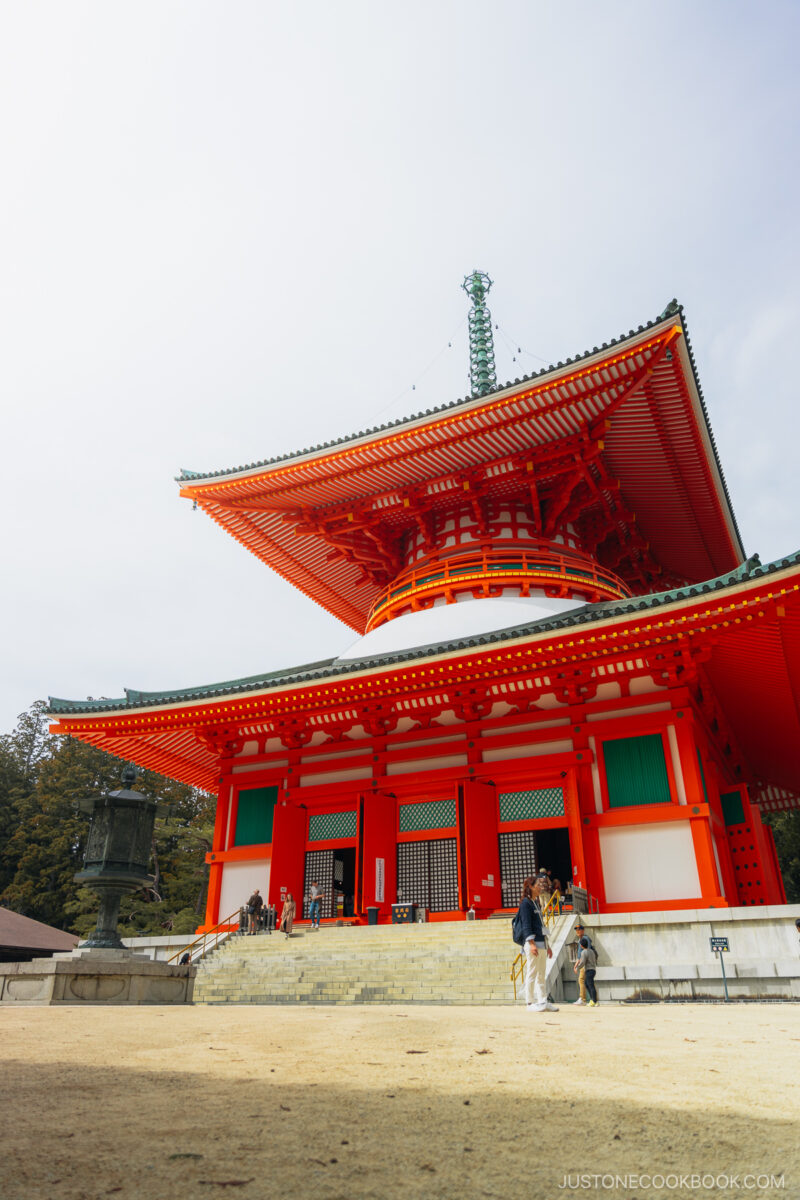

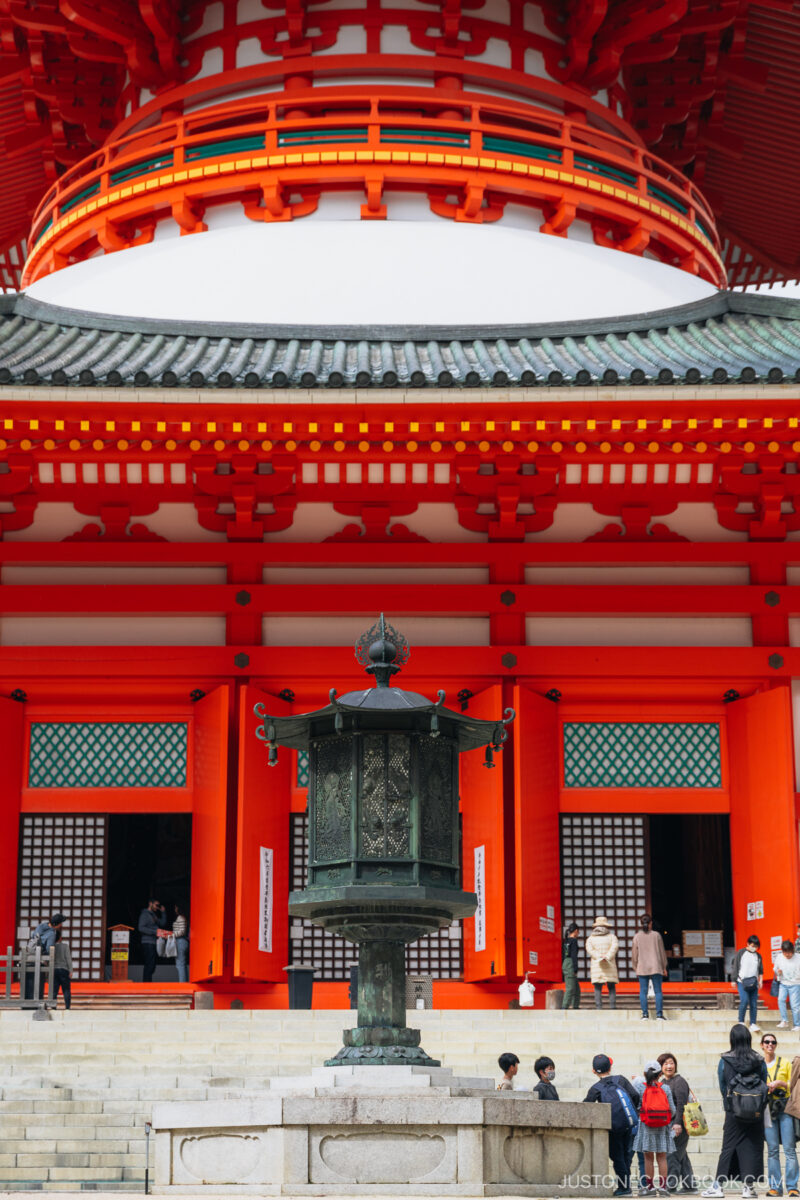



The most prominent structure is the 45-meter-tall, two-story Konpon Daito Pagoda, which Daishi considered the mandala’s center. Inside, the Womb Realm Mandala (an active, physical manifestation of Buddha in the natural world) depicts a three-dimensional representation of the world accompanied by a huge statue of the main deity of Shingo Buddhism, Dainichi Nyorai.
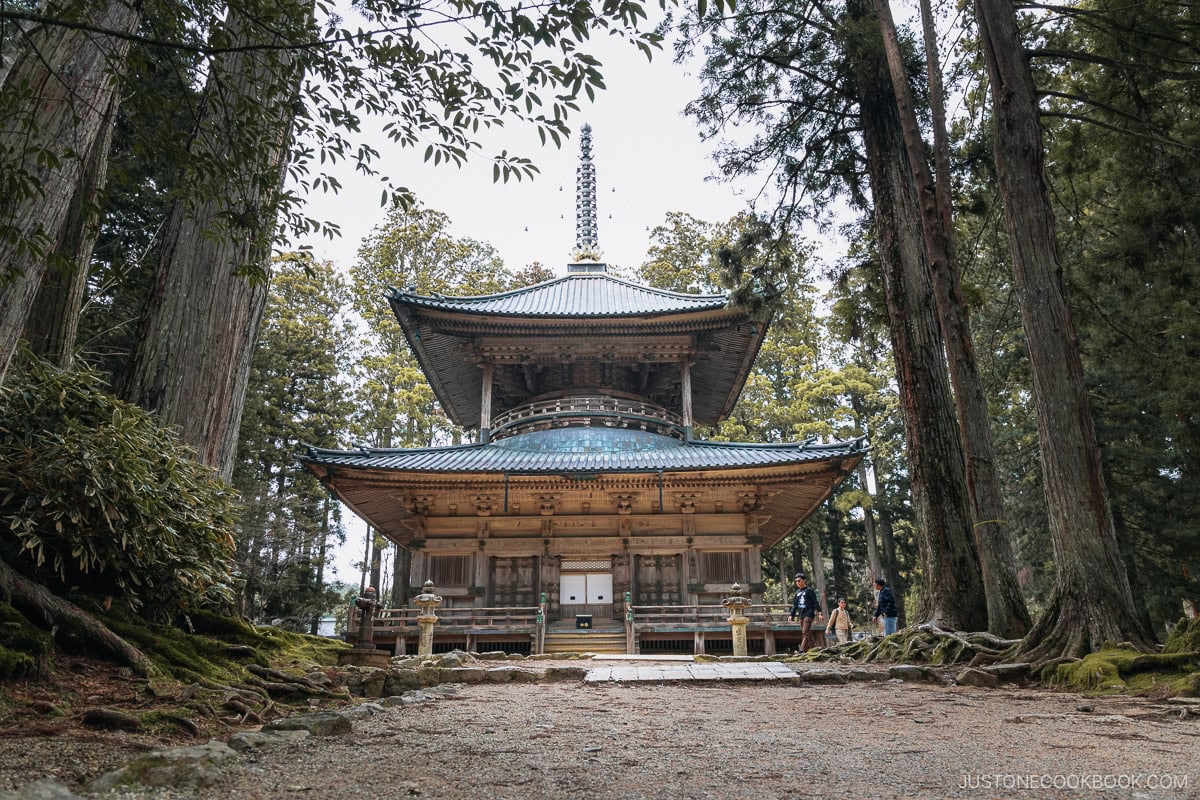

Close by is another pagoda, known as the Saito, which depicts the Diamond Realm Mandala (the cosmic principle of the Buddha).
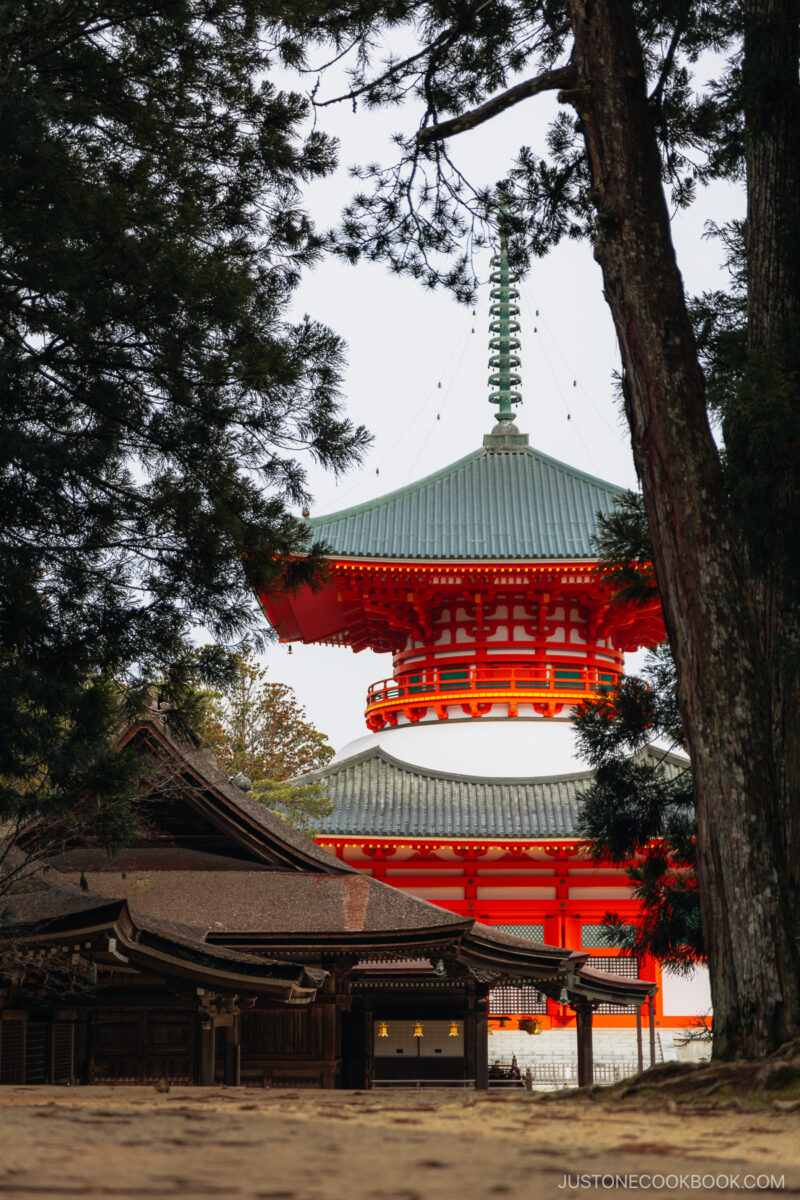

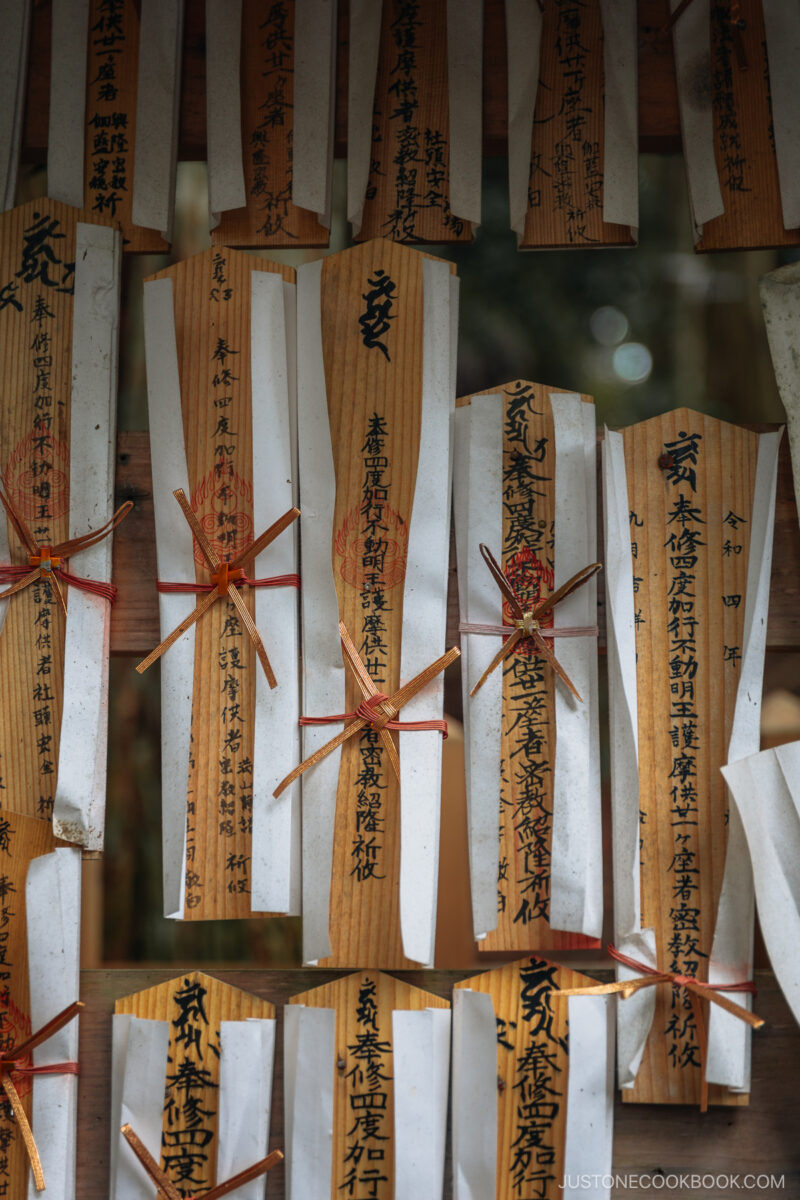

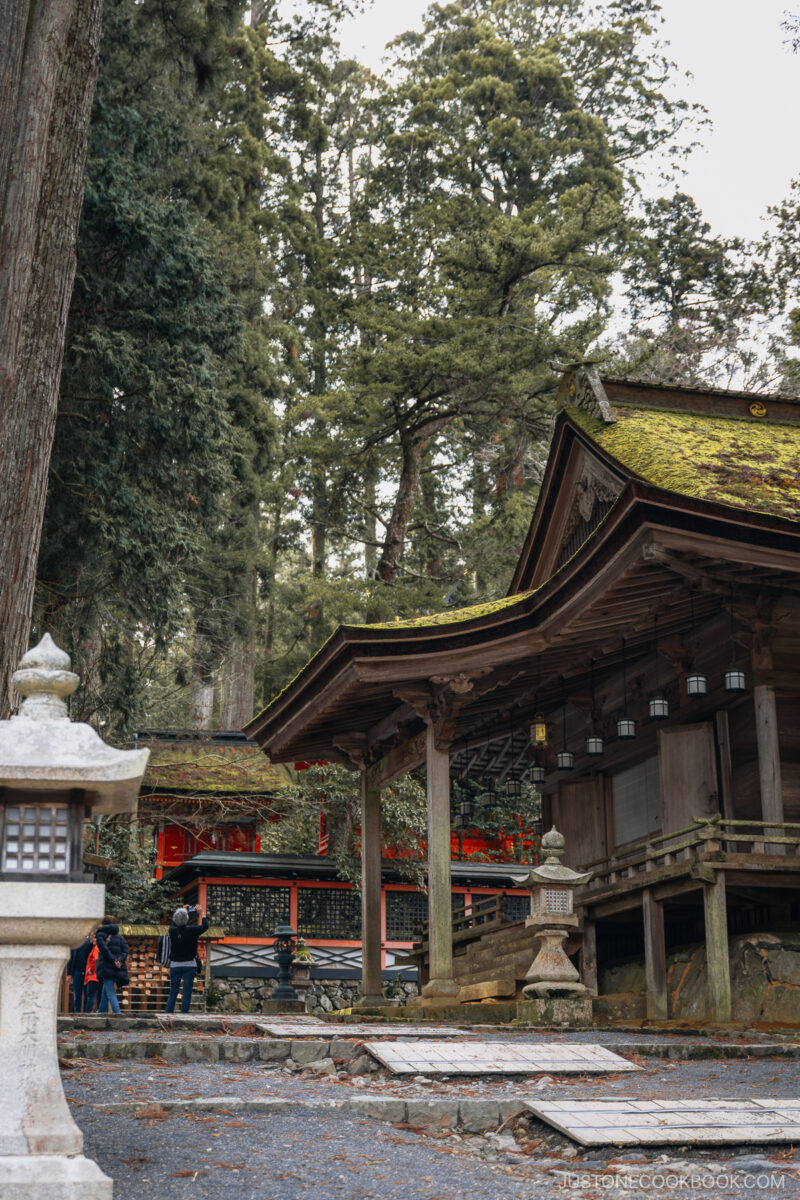

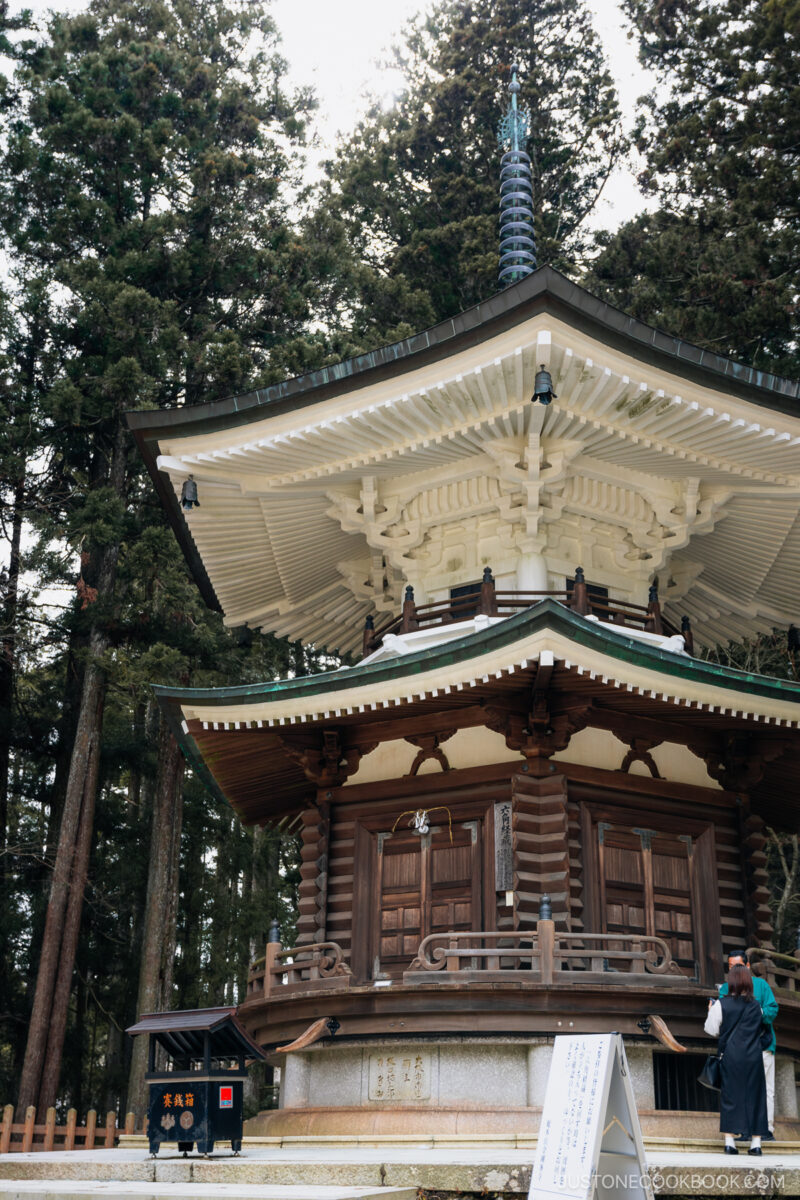



Aside from these two structures, there are a host of other small temples and buildings that you can explore. Explore all the small paths, the nooks and crannies to reveal Danjo Garan’s and Koyasan’s historical tapestry.


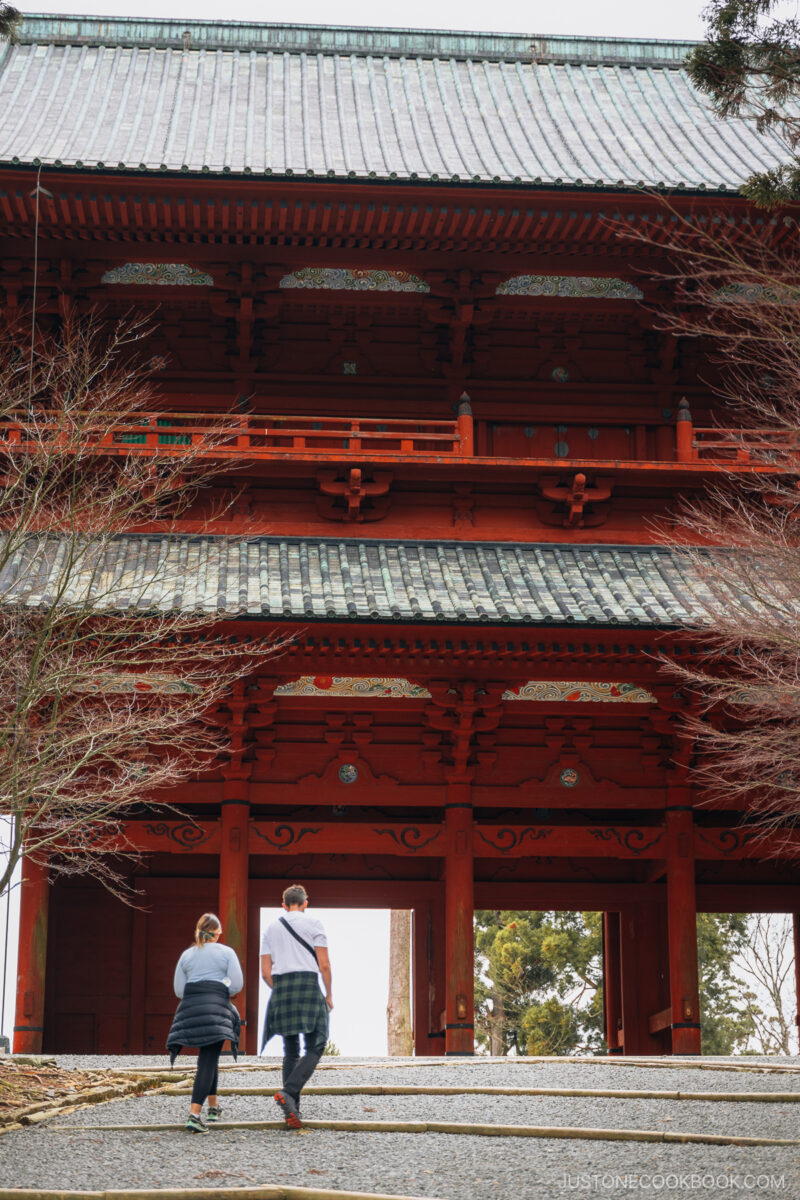

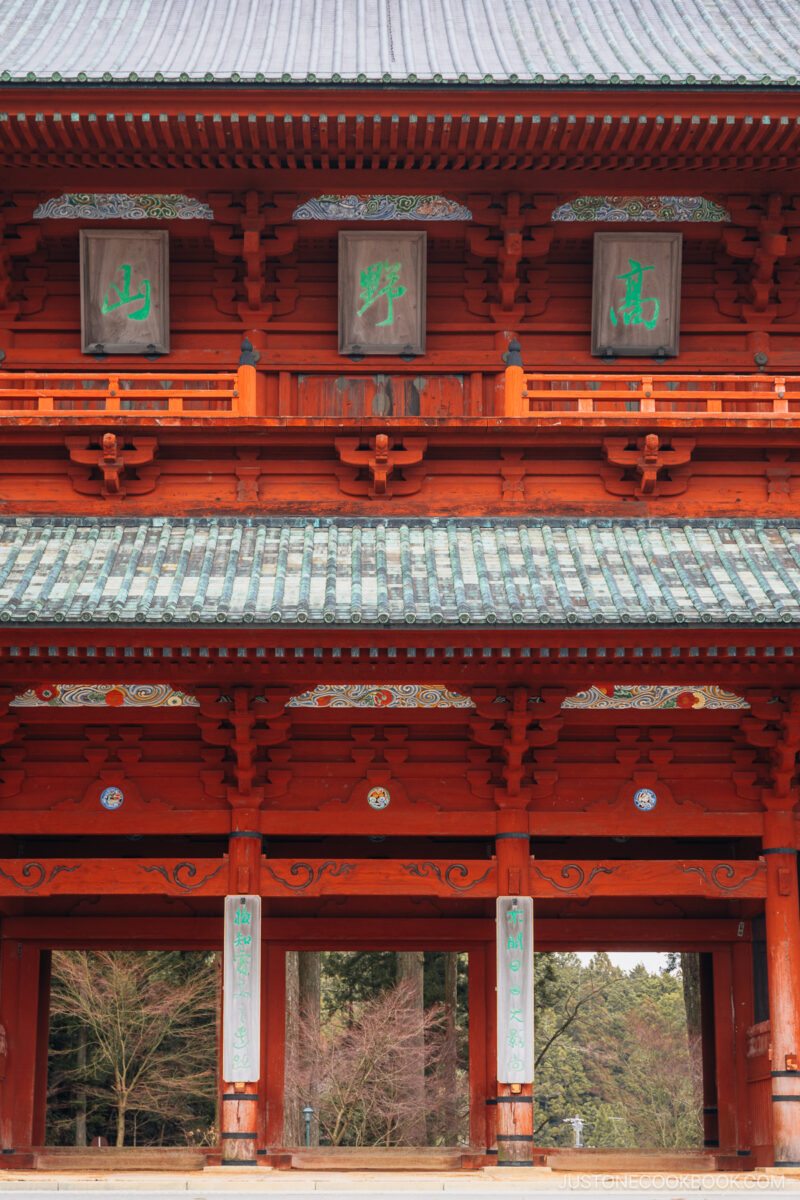

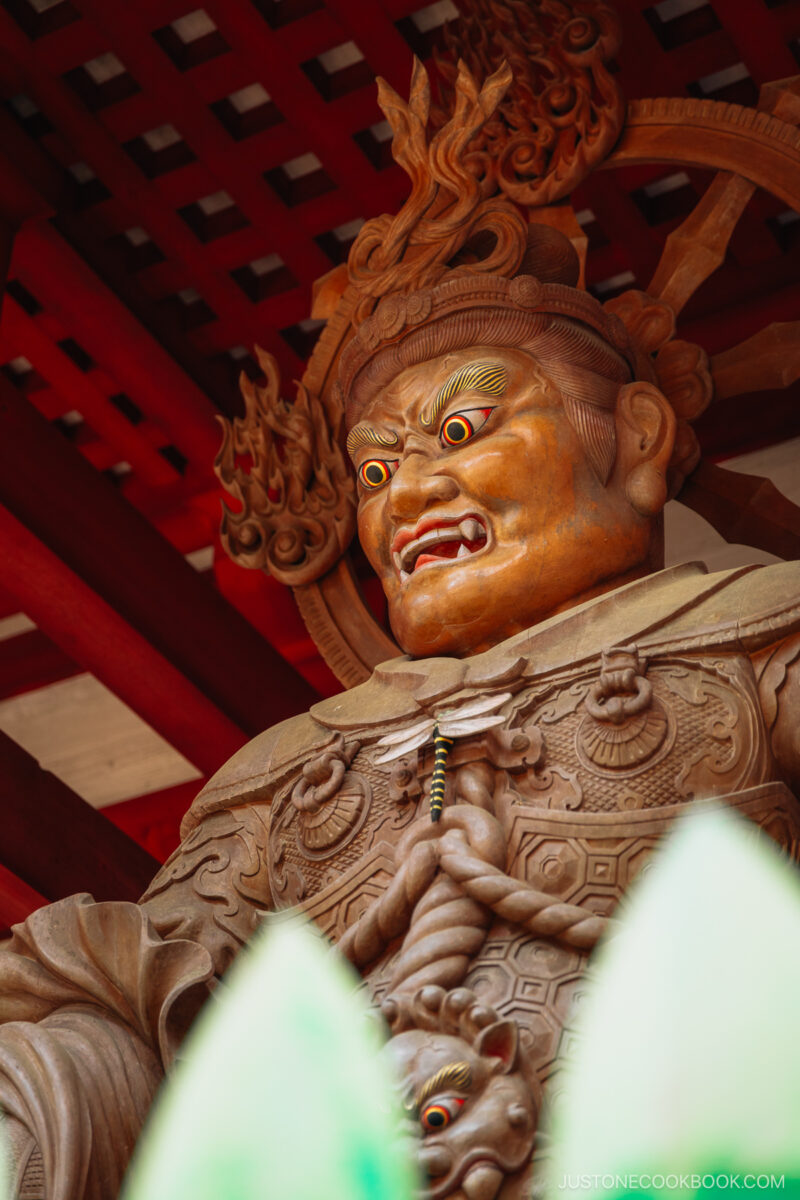

I also recommend walking about 10 minutes west to the giant Daimon Gate, which serves as Koyasan’s entrance. The 25.1-meter tall gate is flanked by two Kongo Rikishi statues, which are said to be the largest of their kind after those of Nara’s famed Todaiji.
Kongobuji
Designated a National Treasure, Kongobuji is the headquarters of the Buddhist Shingon sect. It was built in 1593 by samurai and politician Toyotomi Hideyoshi in memory of his mother.
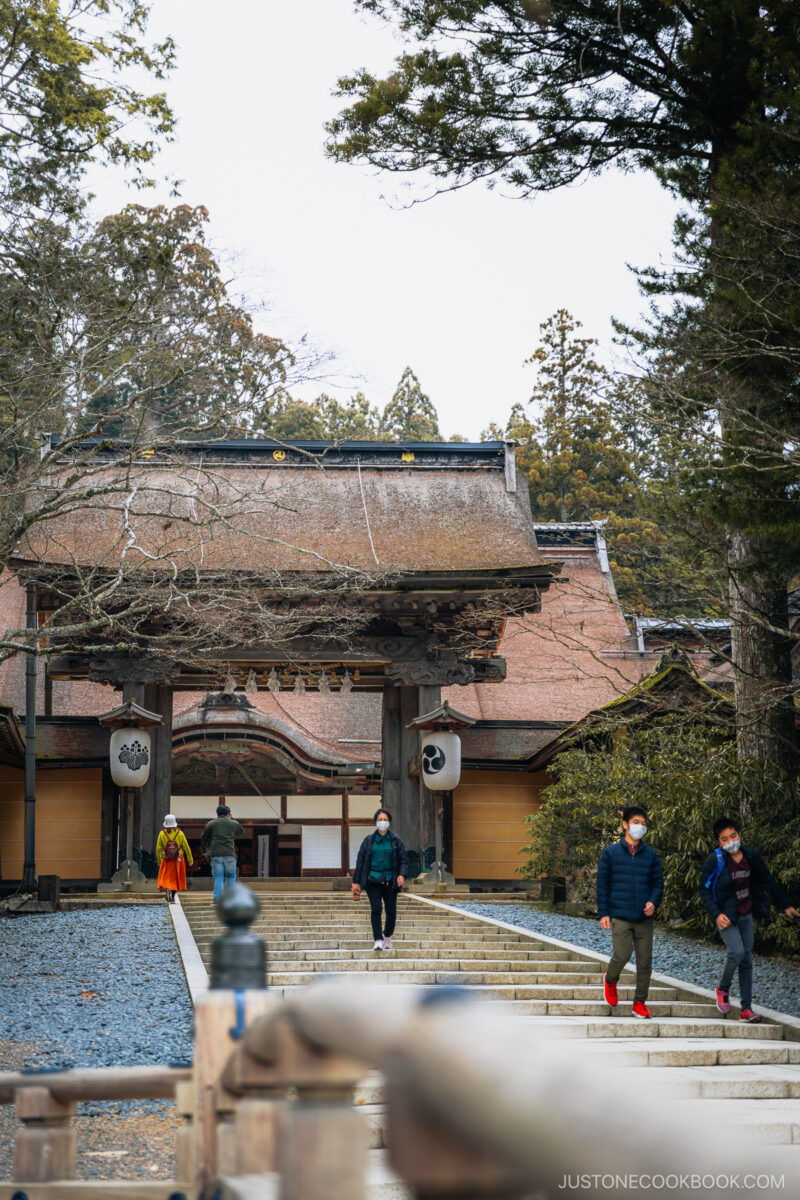

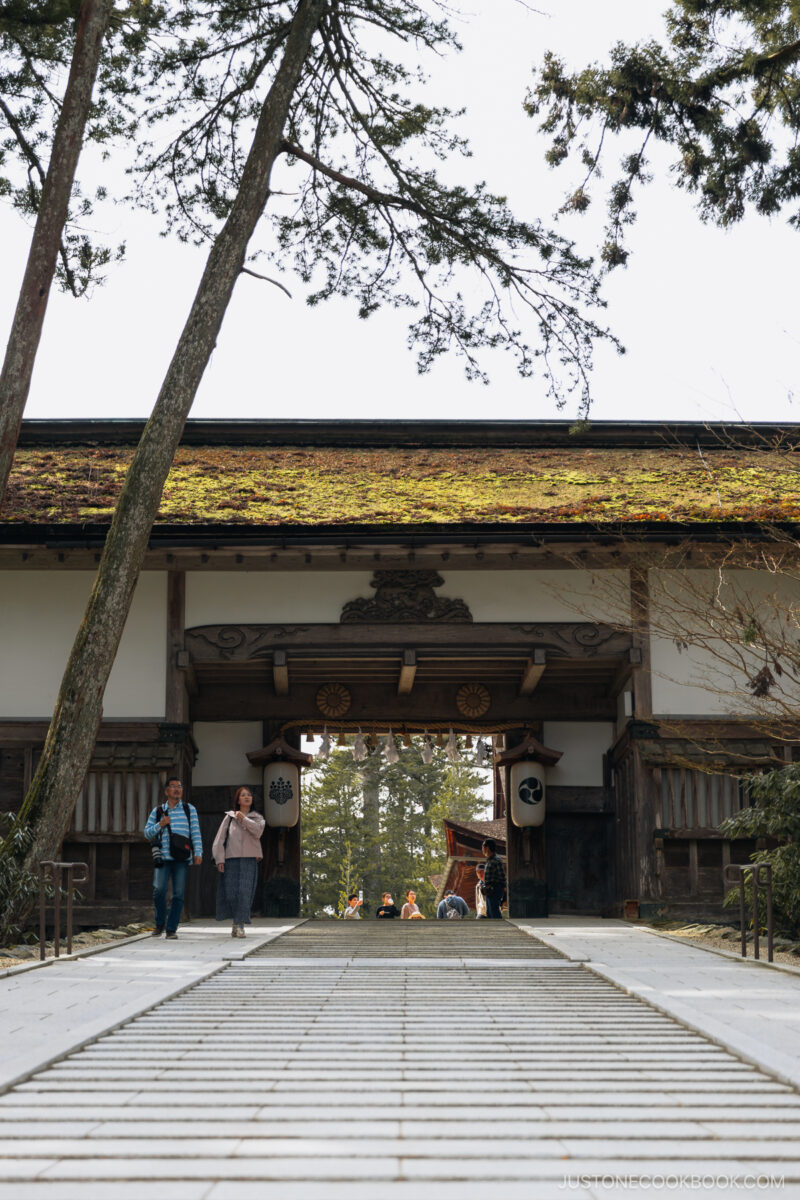

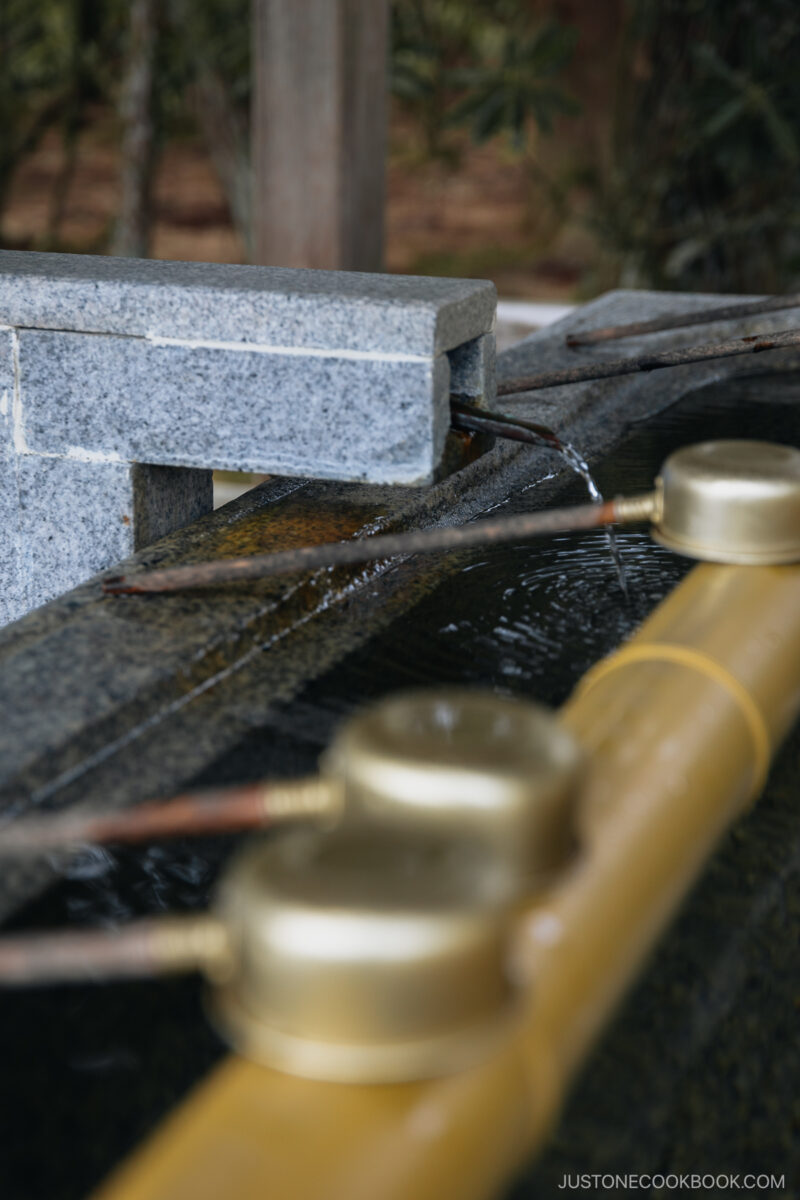

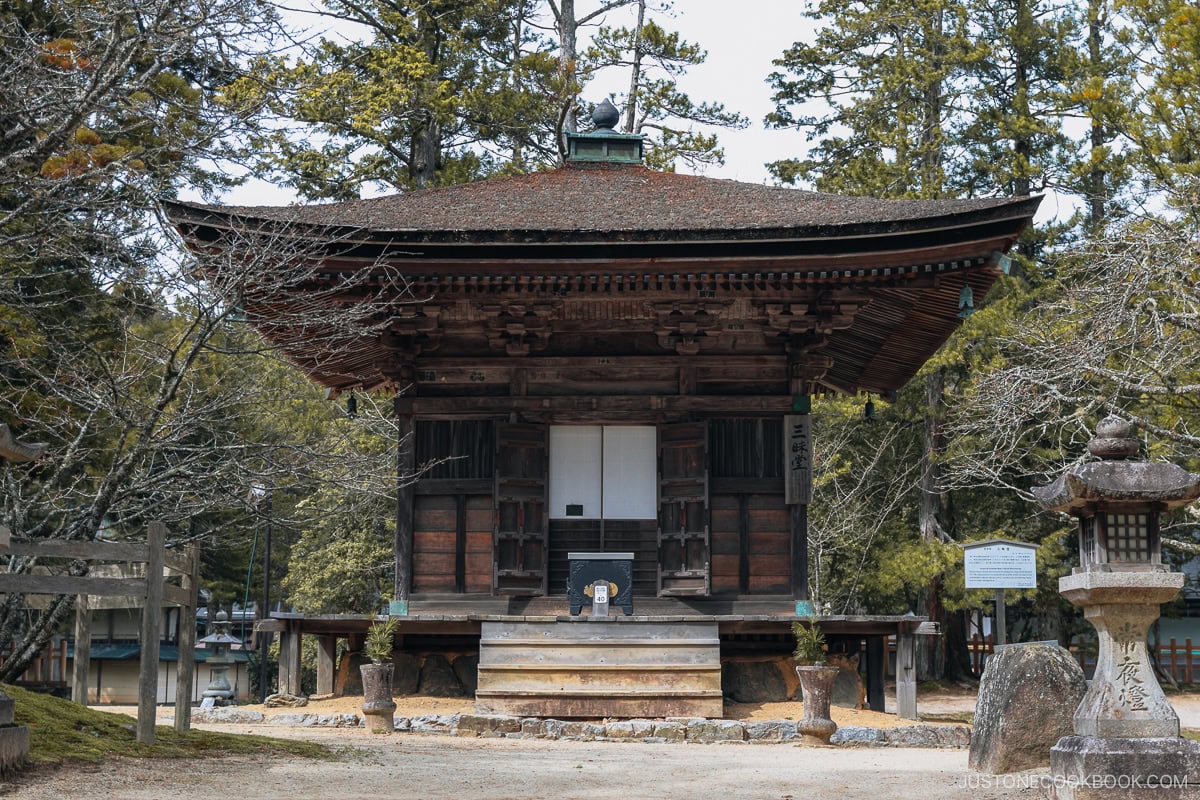

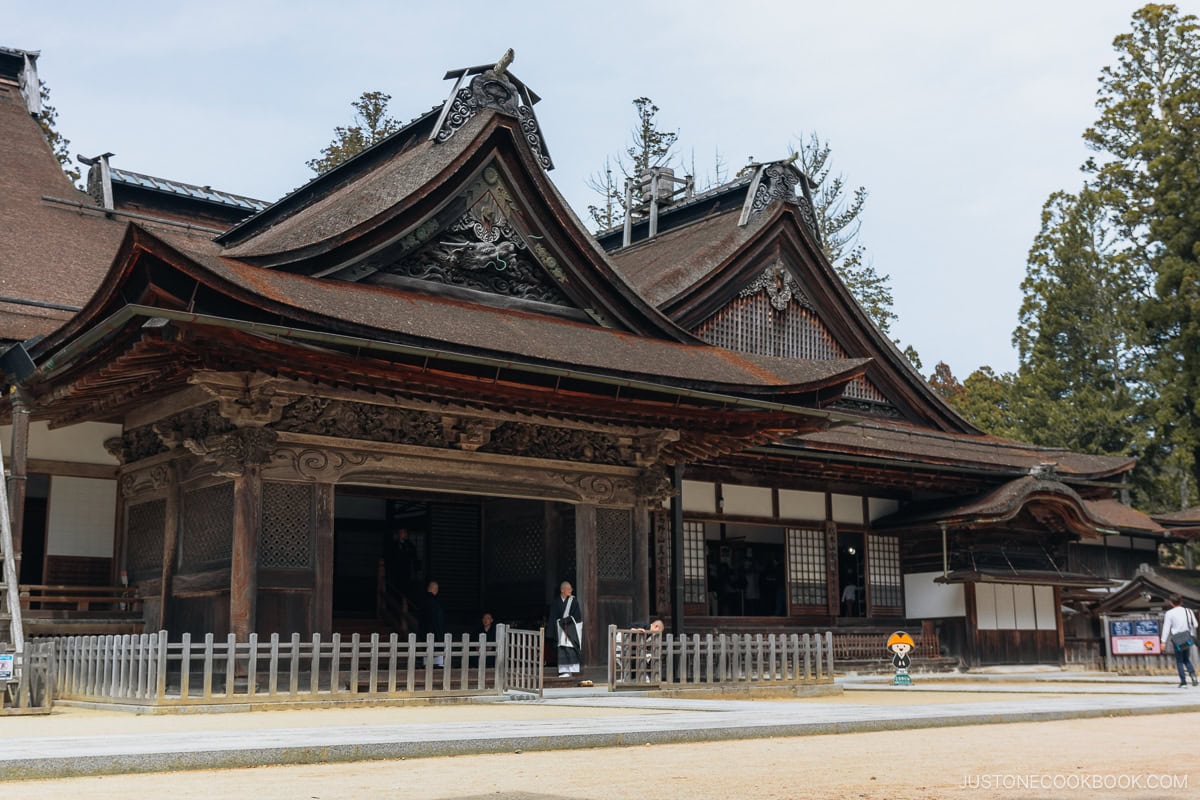

To enter, there is a fee of 1,000 yen. When inside, you can explore the temple’s halls and the Ohiroma room, decorated with extravagant gold fusuma with cranes painted by Kano Tanyu, a famous painter of the Tokugawa period (1603-1868). This room was traditionally used for rituals and religious ceremonies.
The next room is the Yanaginoma, also known as the Willow Room, where Hideyoshi’s nephew, Toyotomi Hidetsugu, committed ritualistic suicide. In addition to these two rooms, you can admire the interior architecture, decorations, and treasures. Don’t forget to relax in the Shin Betsuden, a large tatami hall where you can enjoy complimentary tea and a small snack.
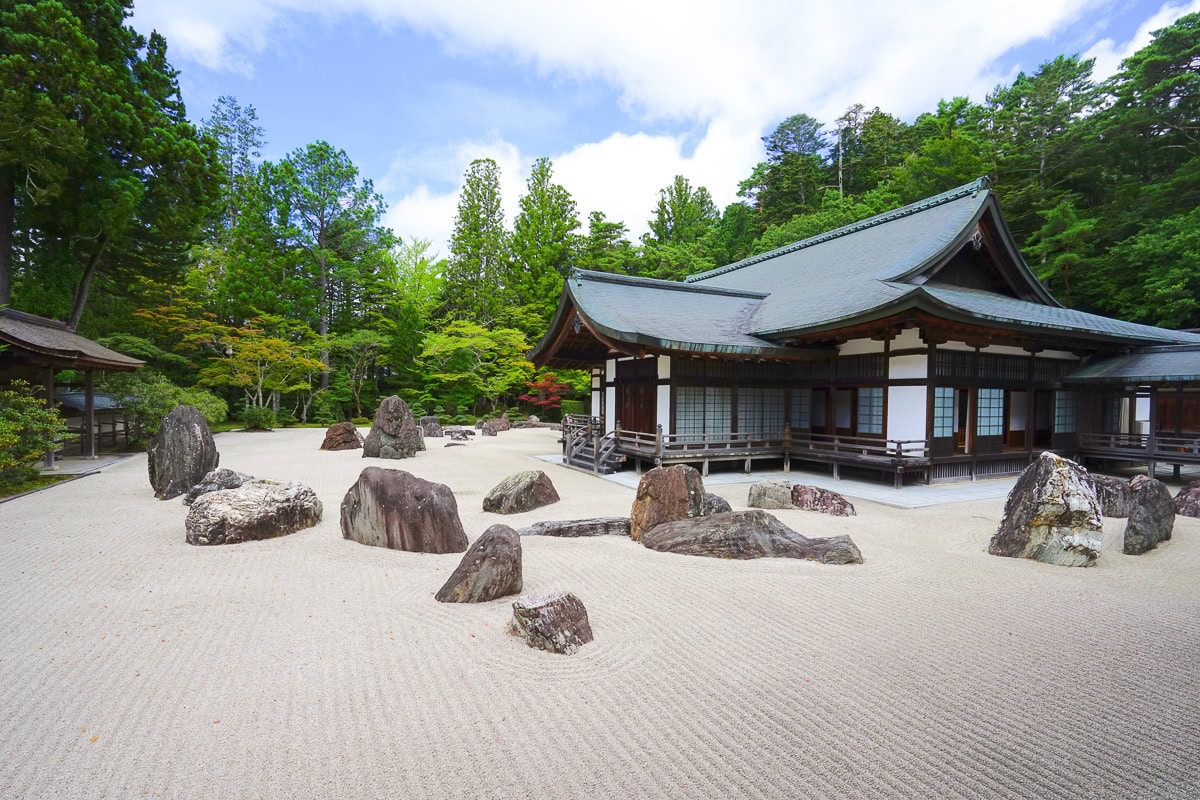

Finally, there is Banryutei Rock Garden, Japan’s largest rock garden. The rocks are laid out to represent two dragons rising from a sea of clouds to protect the temple.
Temple Lodging
One of the best ways to appreciate Koyasan’s history and charm is by staying overnight in a temple known as a shukubo. There are approximately 117 temples in the area, 52 of which are shukubo. Most are foreigner-friendly, so they can be booked on popular hotel websites.
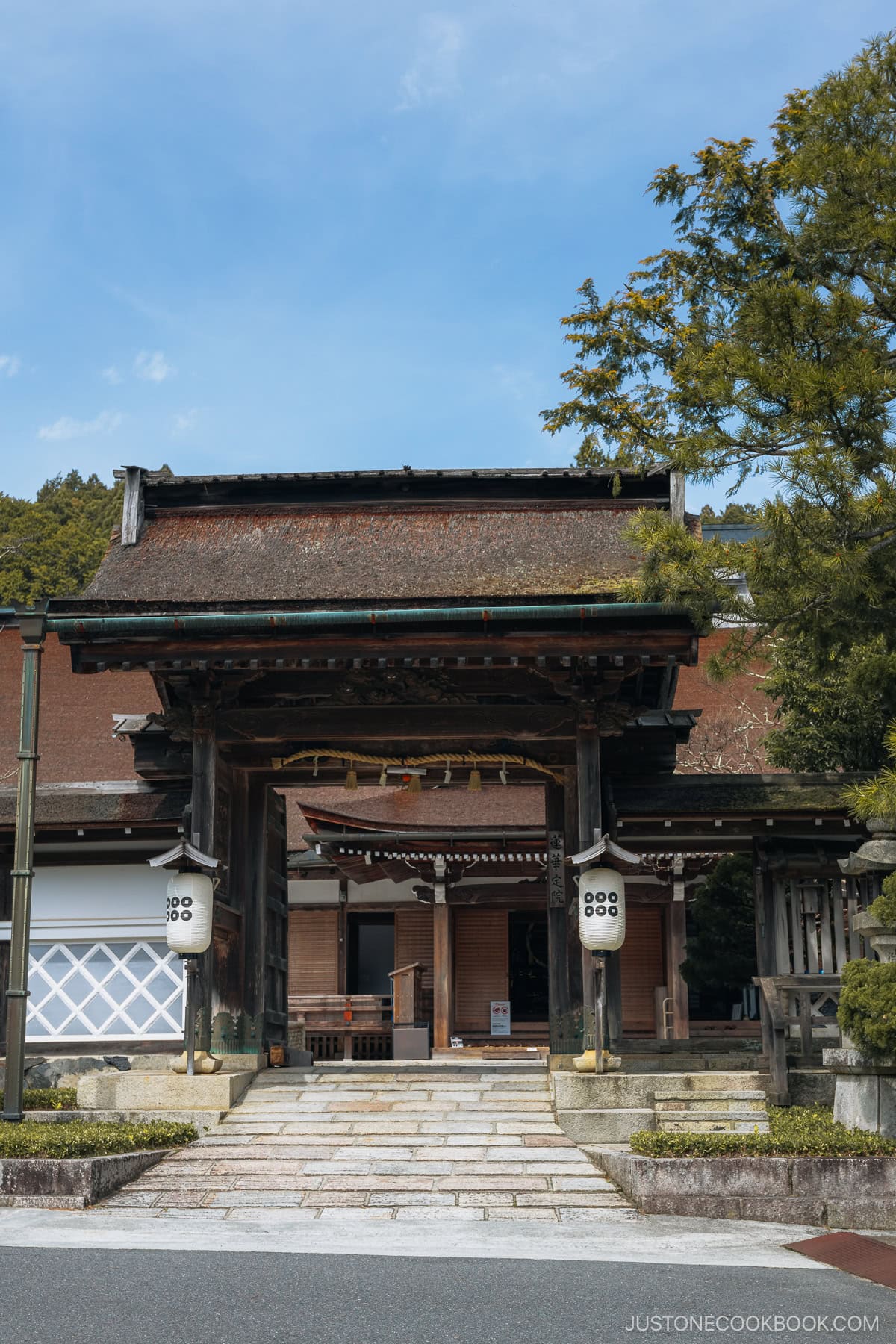

While there are many options in the area, I stayed at Ren’gejo-in, about a 10-minute walk from the town center. The history of Ren’gejo-in is fascinating, and I recommend you read about it if you plan to stay there.
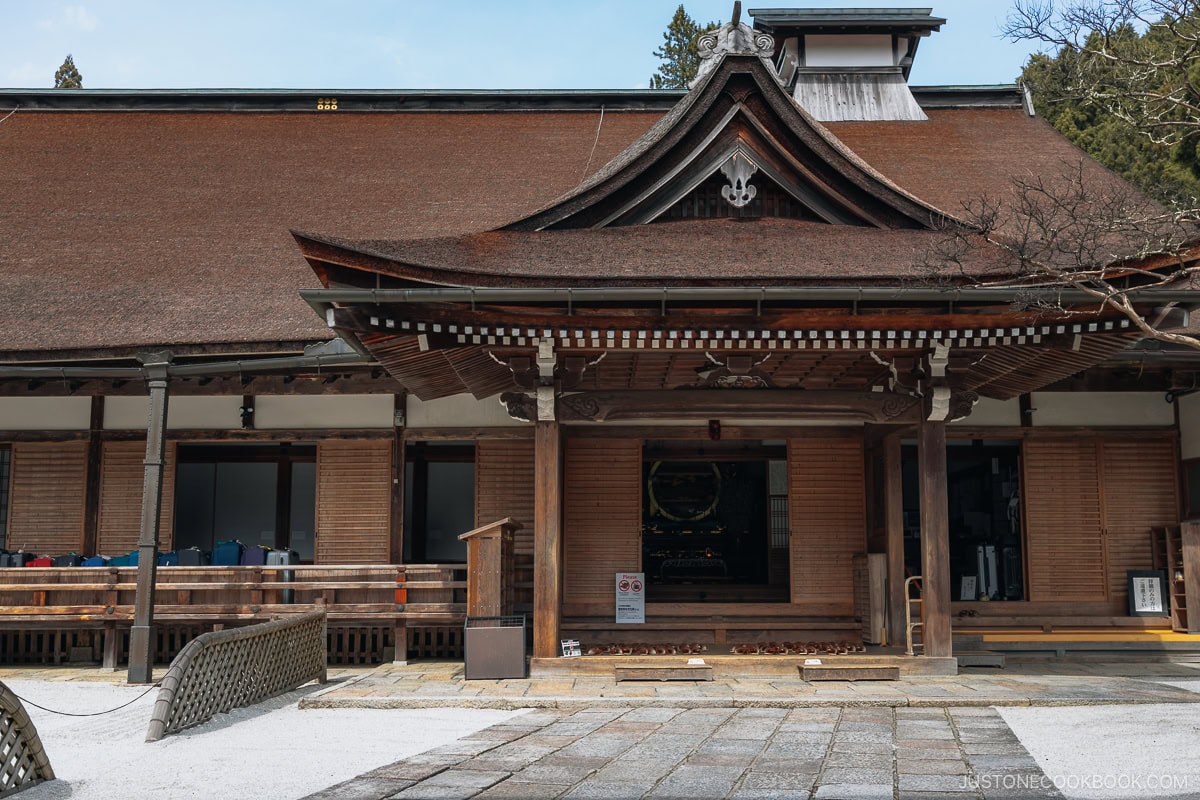

The entrance is marked by the sanmon (main gate) with large paper lanterns raised on poles and bearing the Sanada family crest (the father and son of the Sanada family temporarily resided in the temple.)
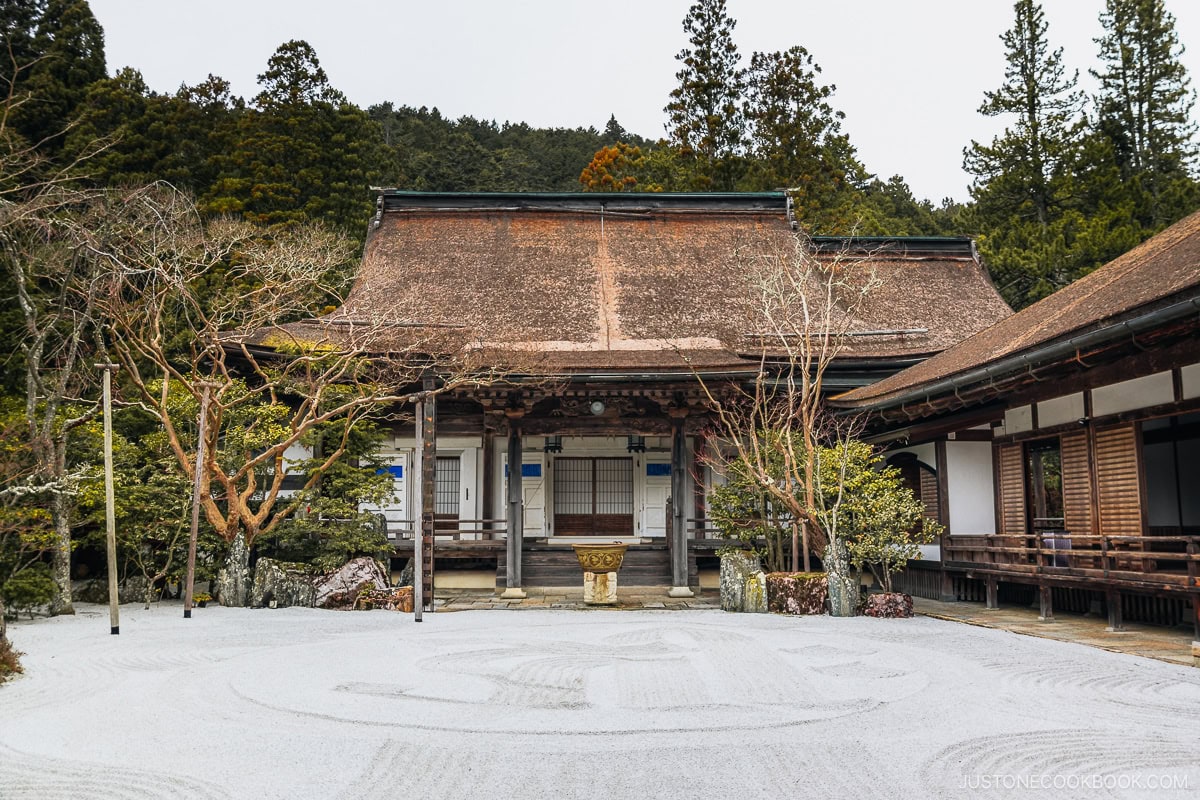

The front rock garden is designed in a karesansui style that portrays the Buddhist view of the world using stones, sand, plants, and trees to represent ponds and flowing rivers.


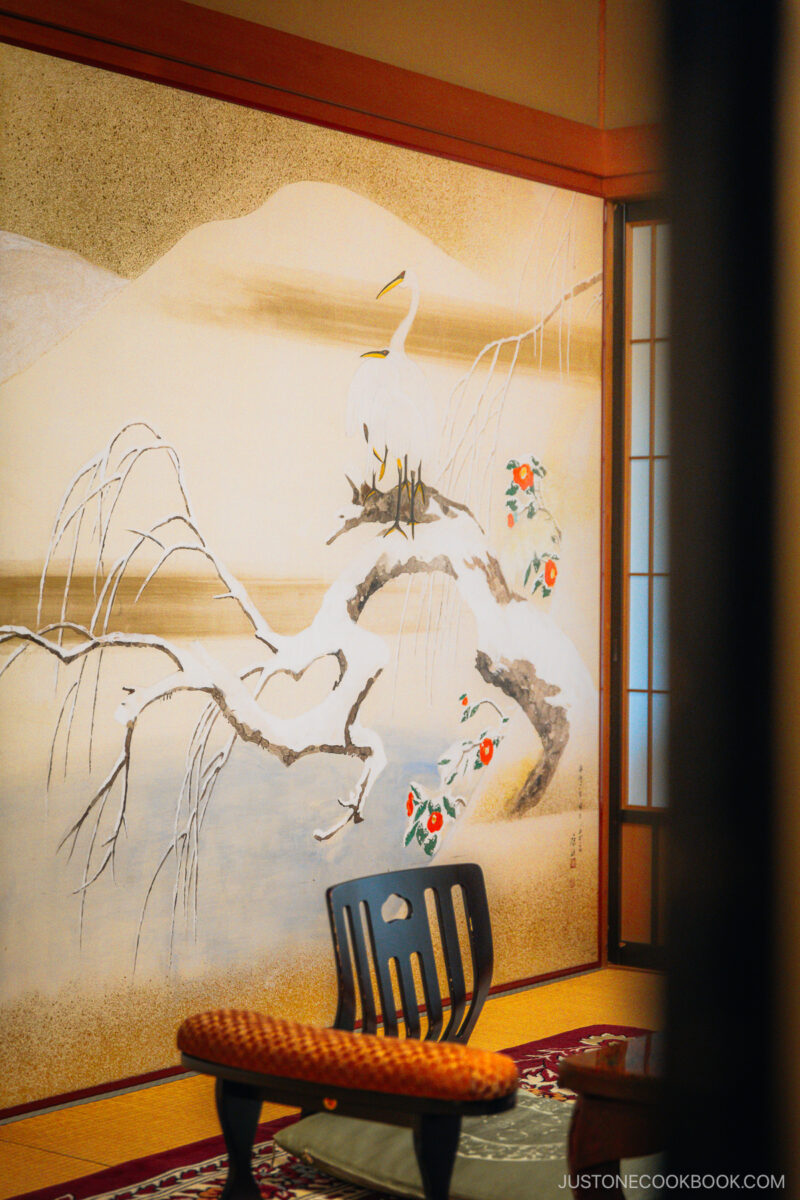



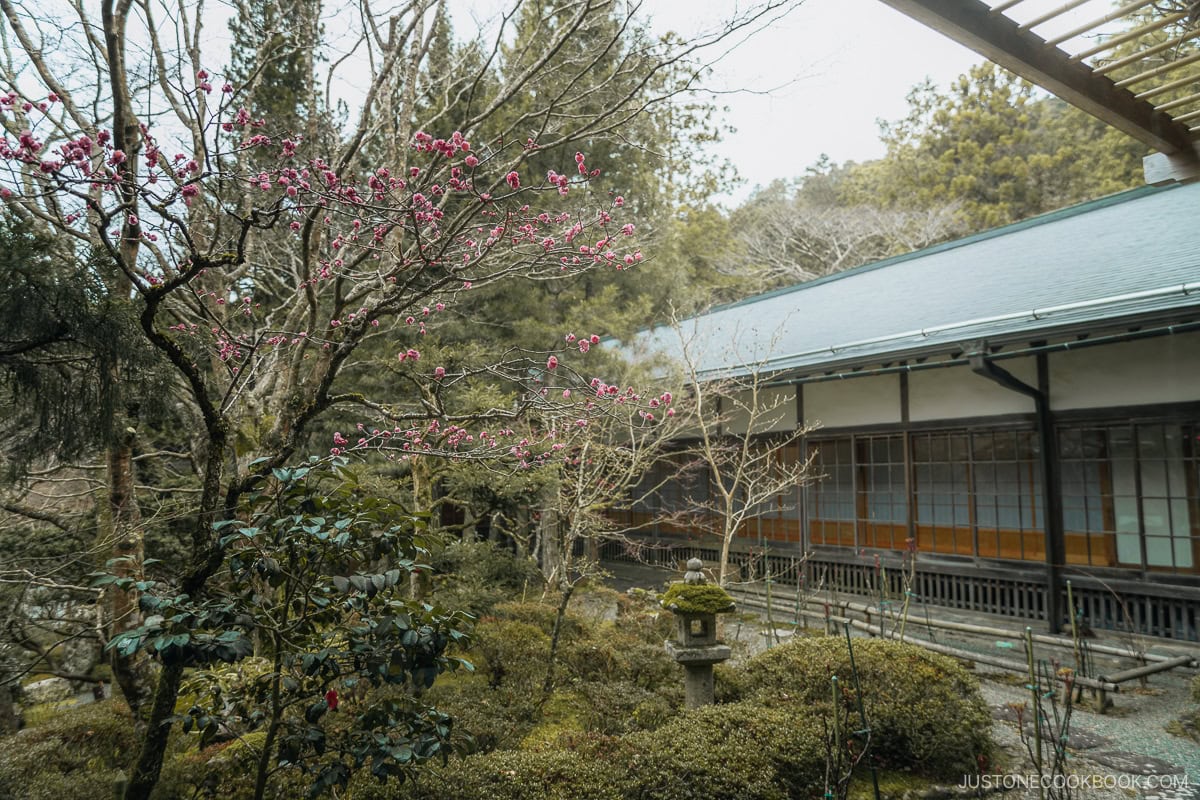

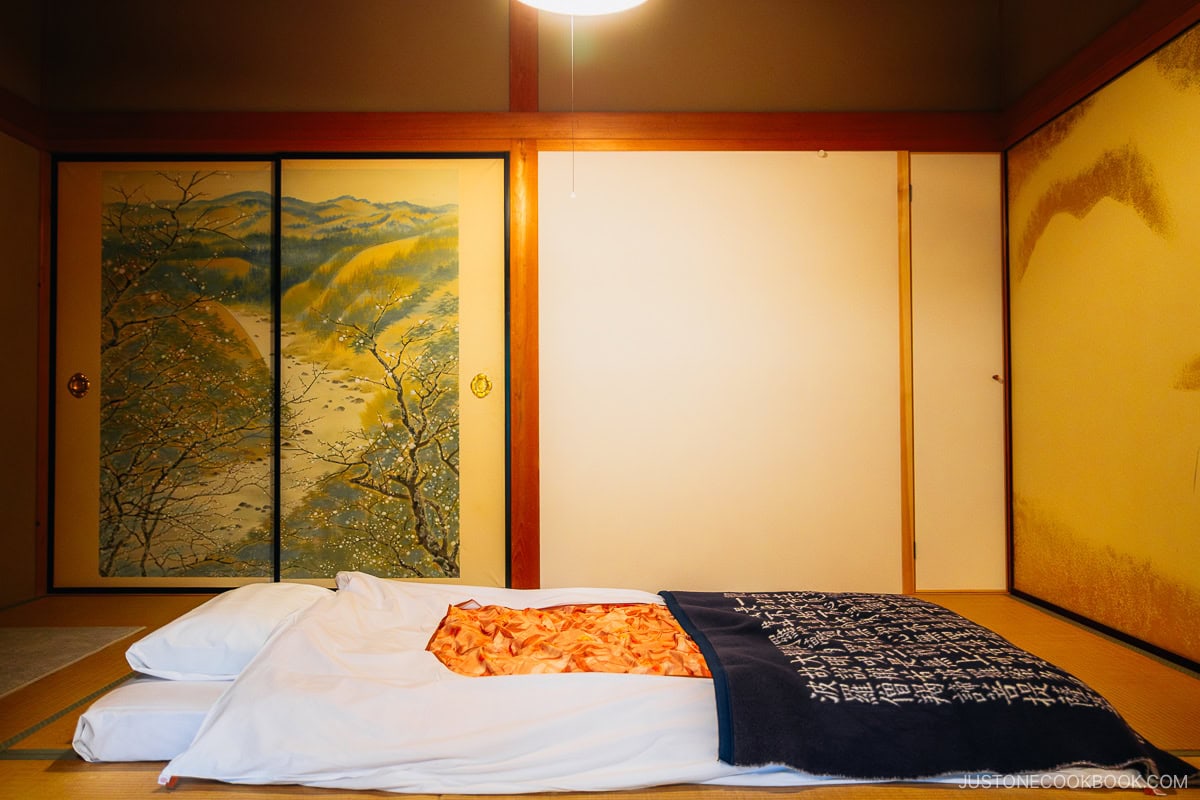

Temple lodgings typically have traditional Japanese rooms with tatami floors, decorated fusuma (sliding doors), and shared toilet and bathing facilities. My room also had a great view of the courtyard outside!
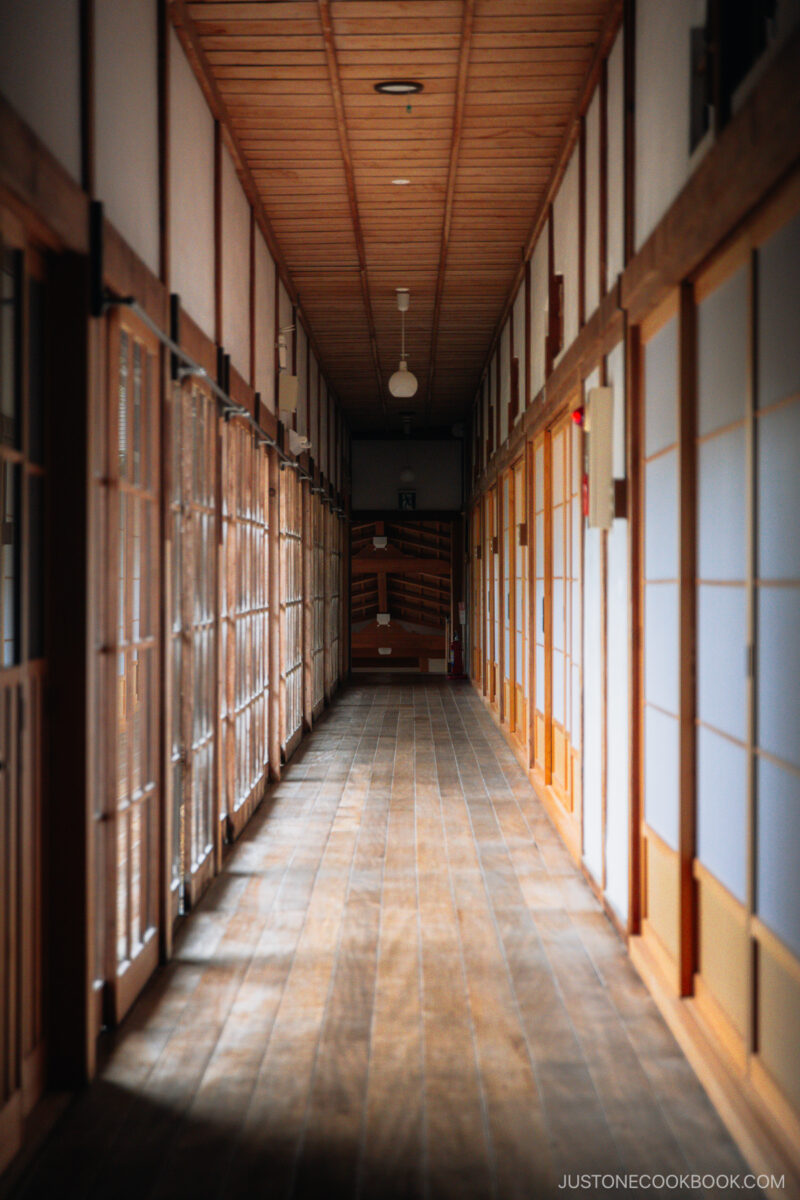

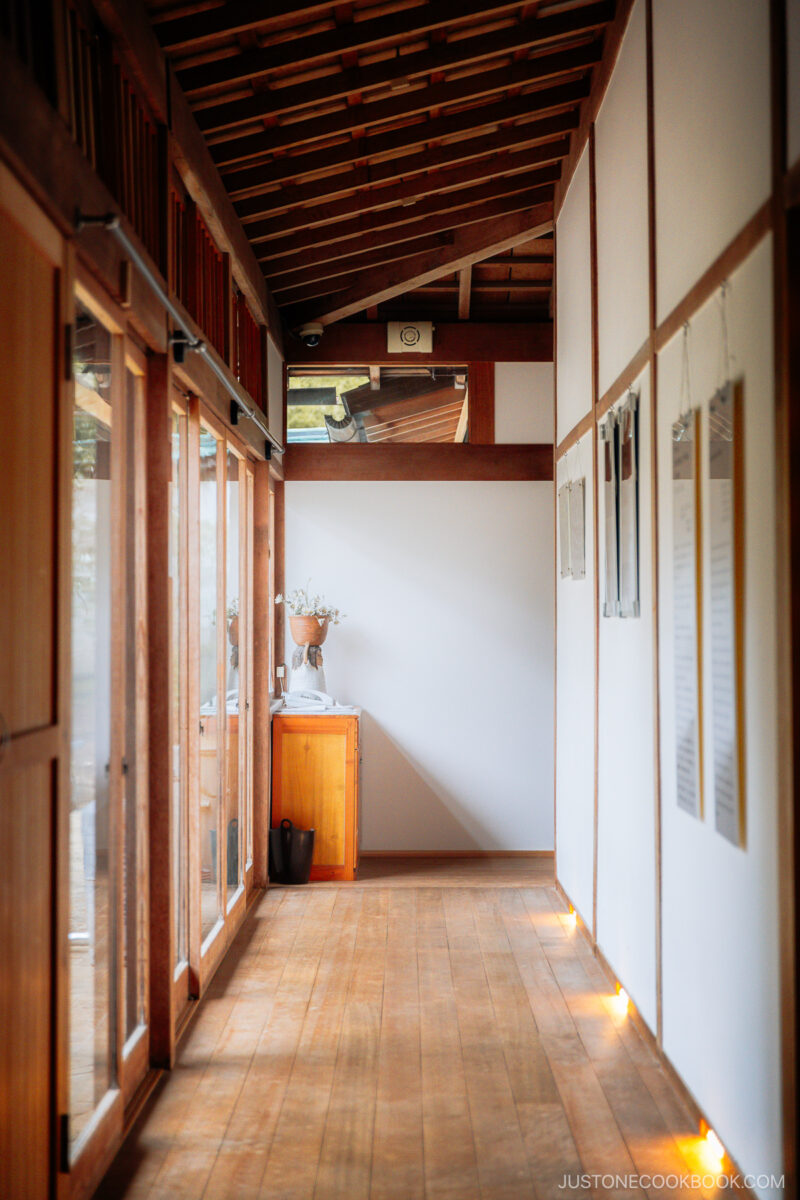

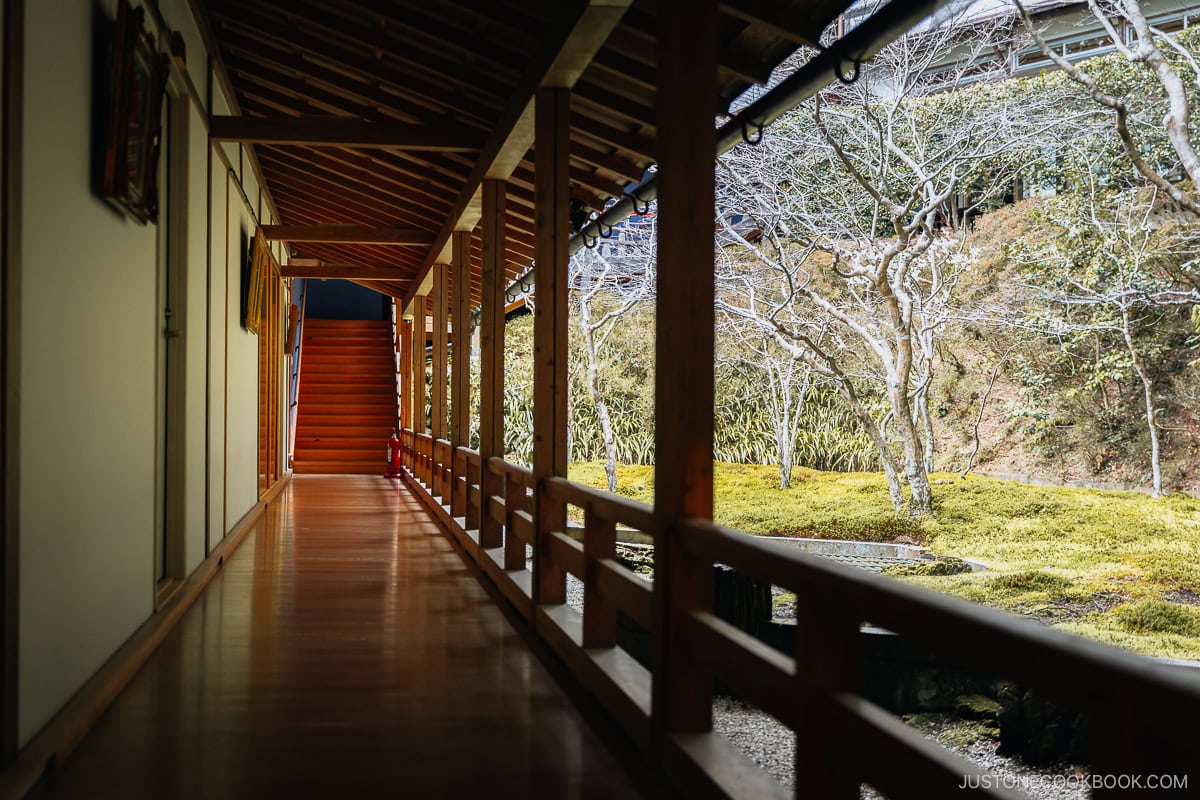

Although there are no entertainment facilities like in a traditional hotel, you can enjoy the temple’s design and tranquility.
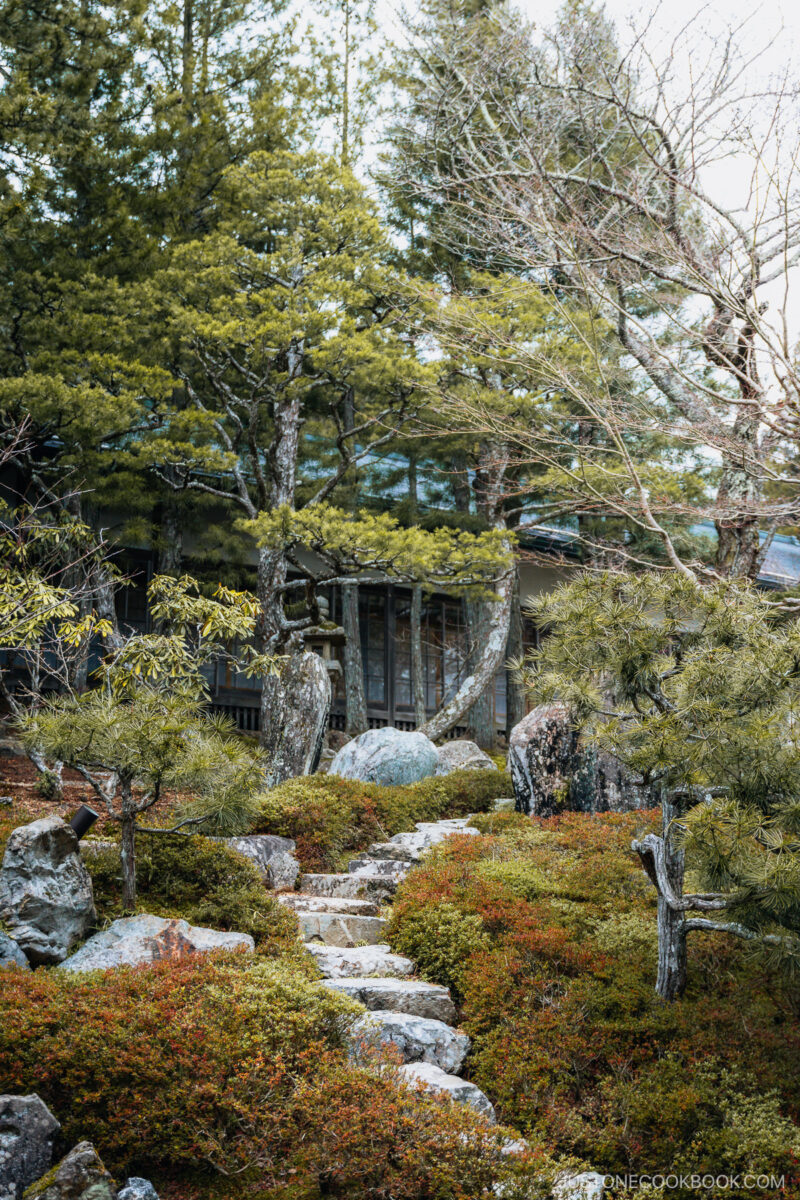

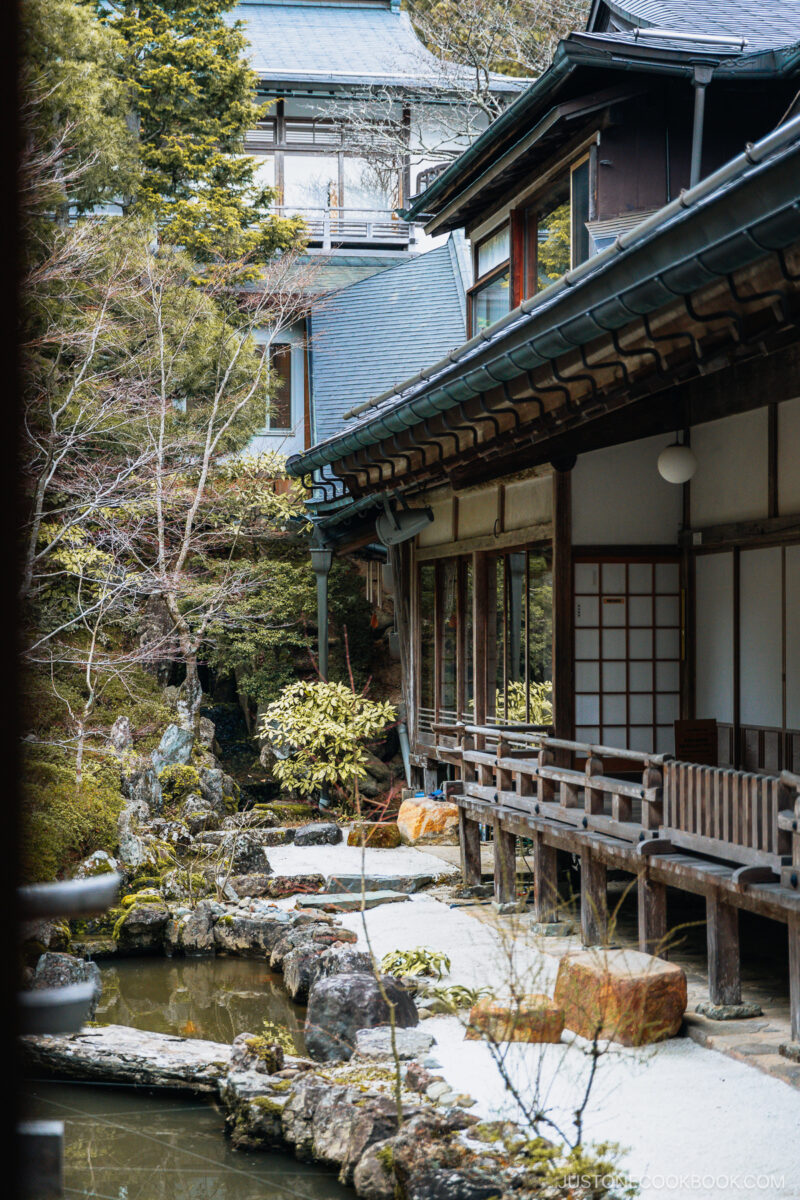

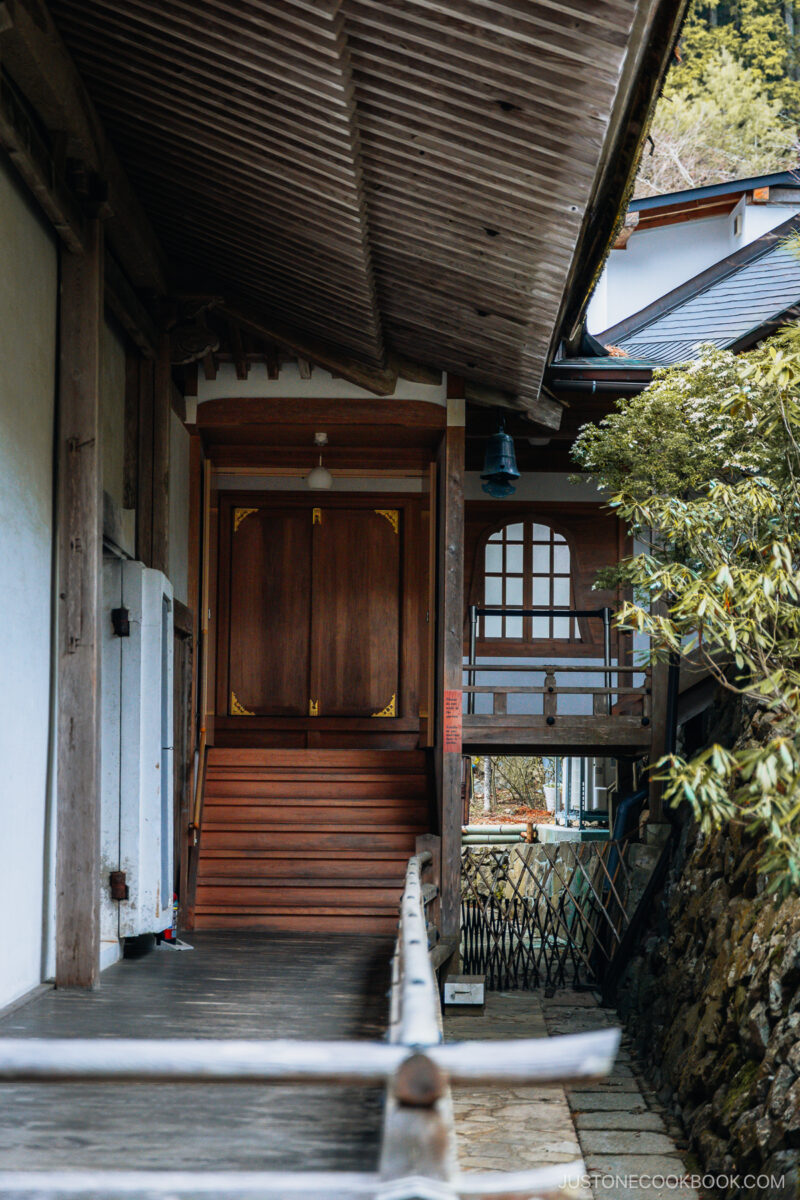

In the center of the temple complex is a courtyard home to a pine tree over 500 years old and a maple tree that survived the fire that broke out during the Tempo Period.
Temple Lodging Dinner
Guests are recommended to check in before 5 p.m. so they can settle and prepare for dinner at 6 p.m. In the Gomada hall, they can also partake in a 45-minute sutra recital and meditation session with the temple monk.
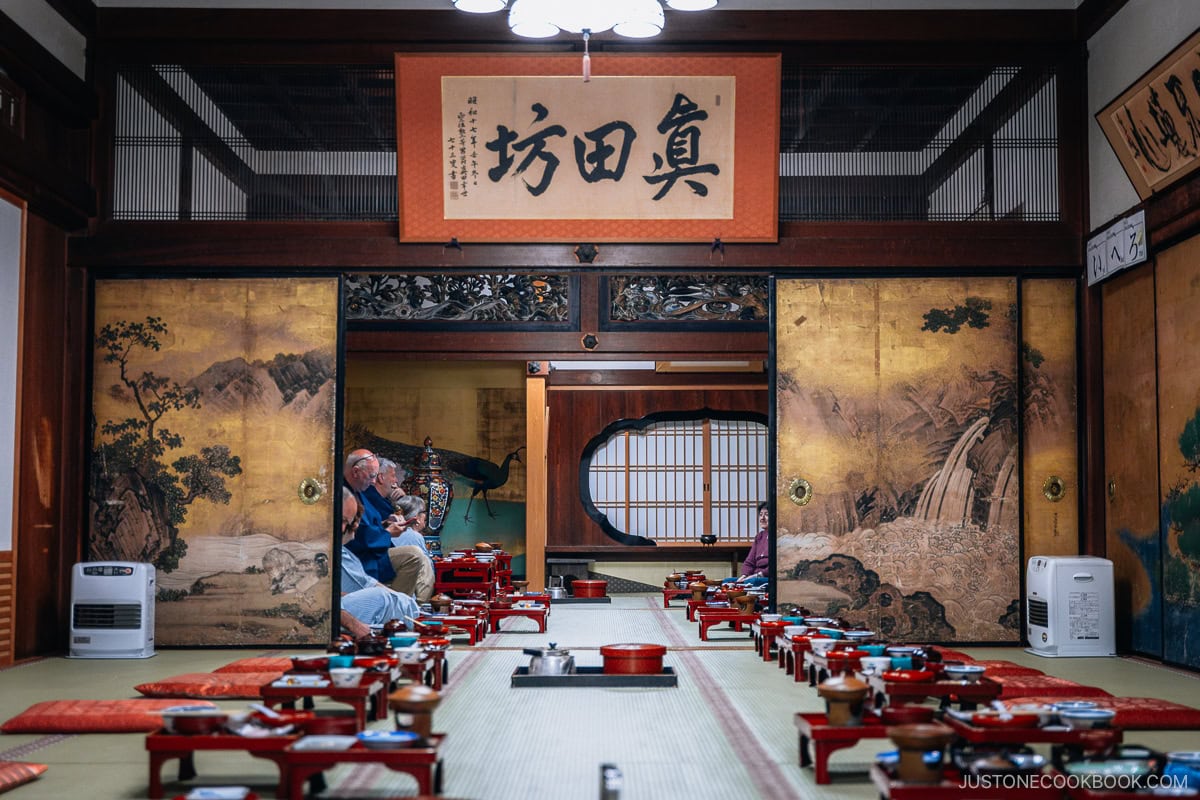

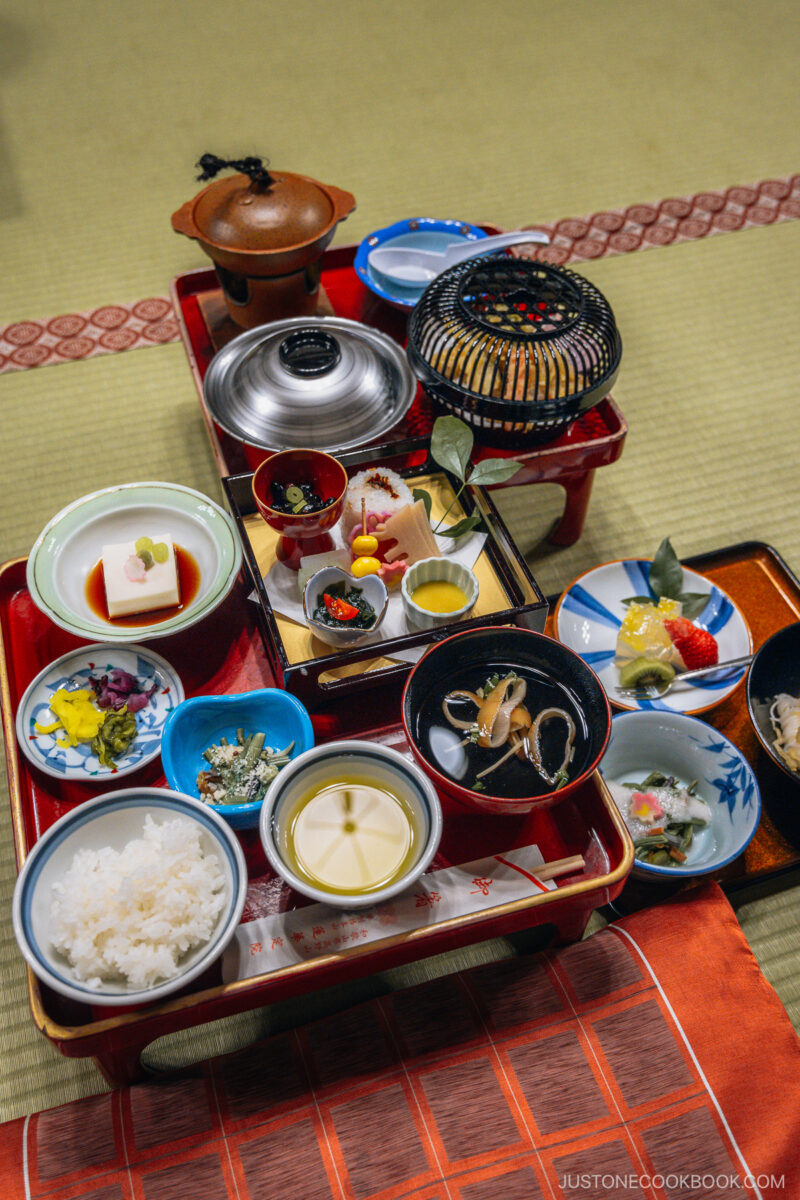

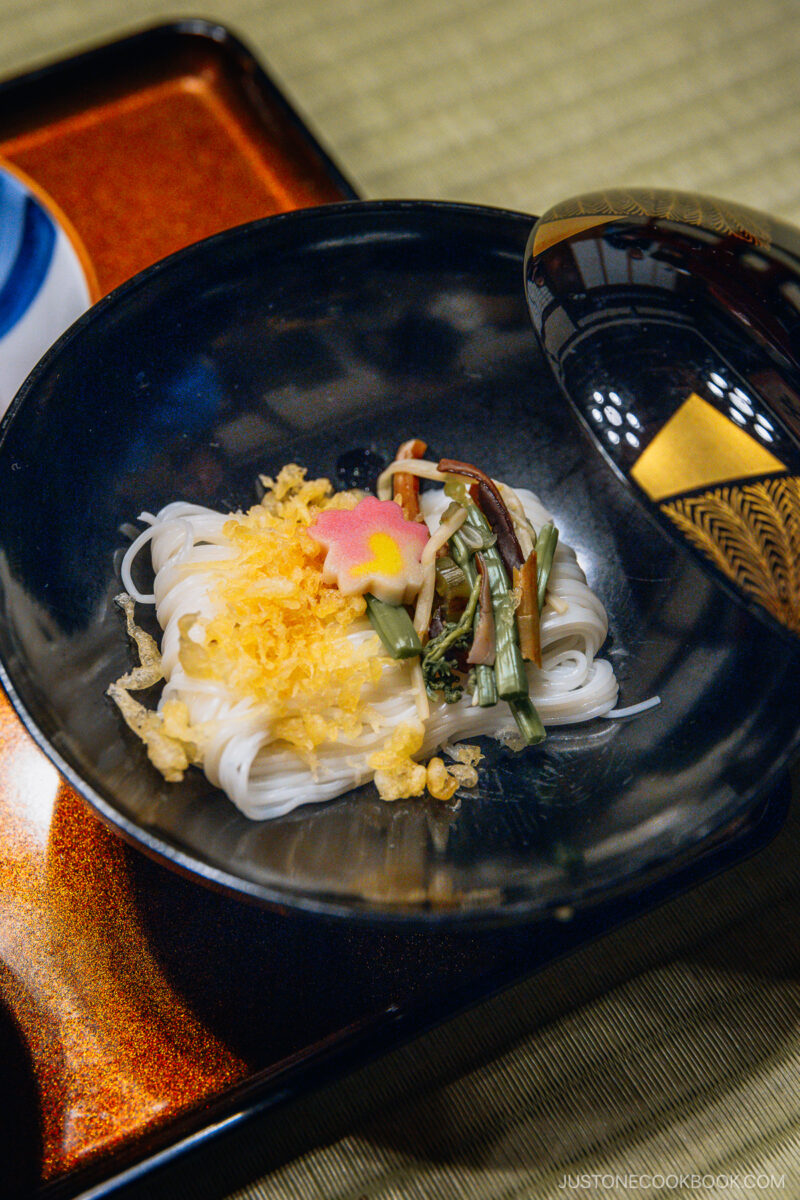

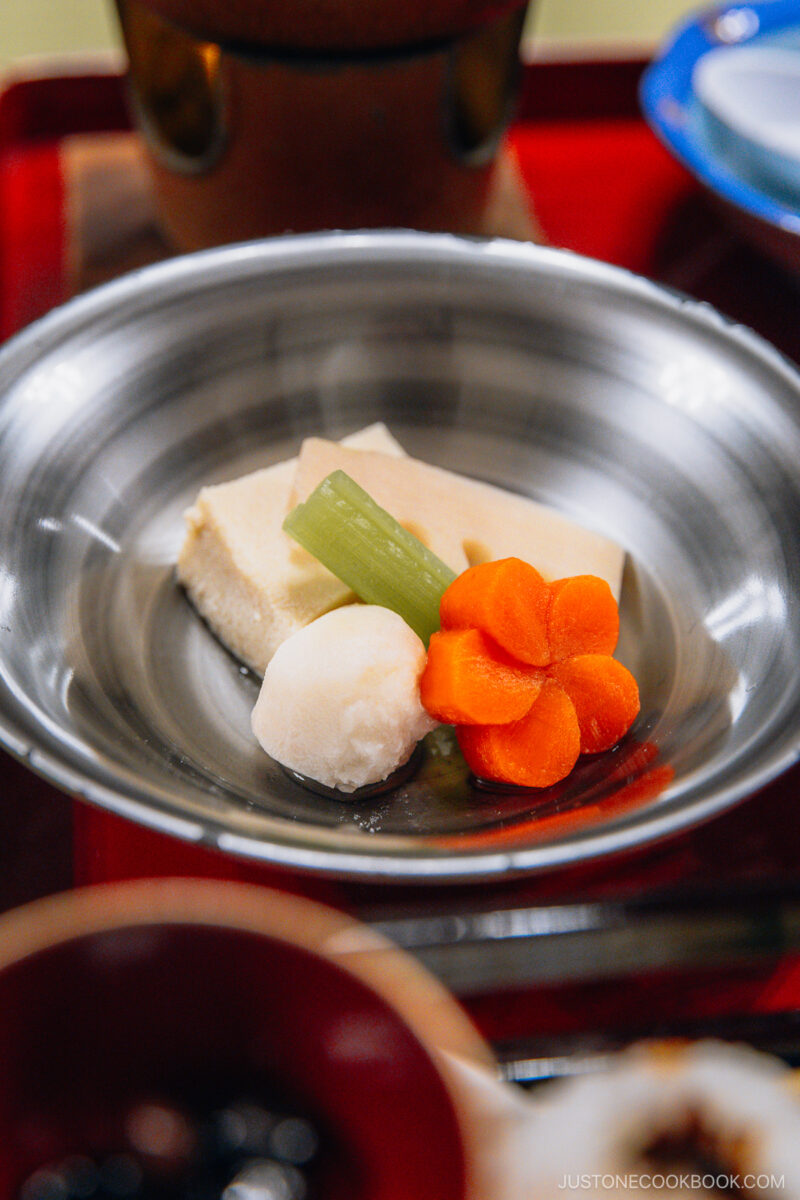

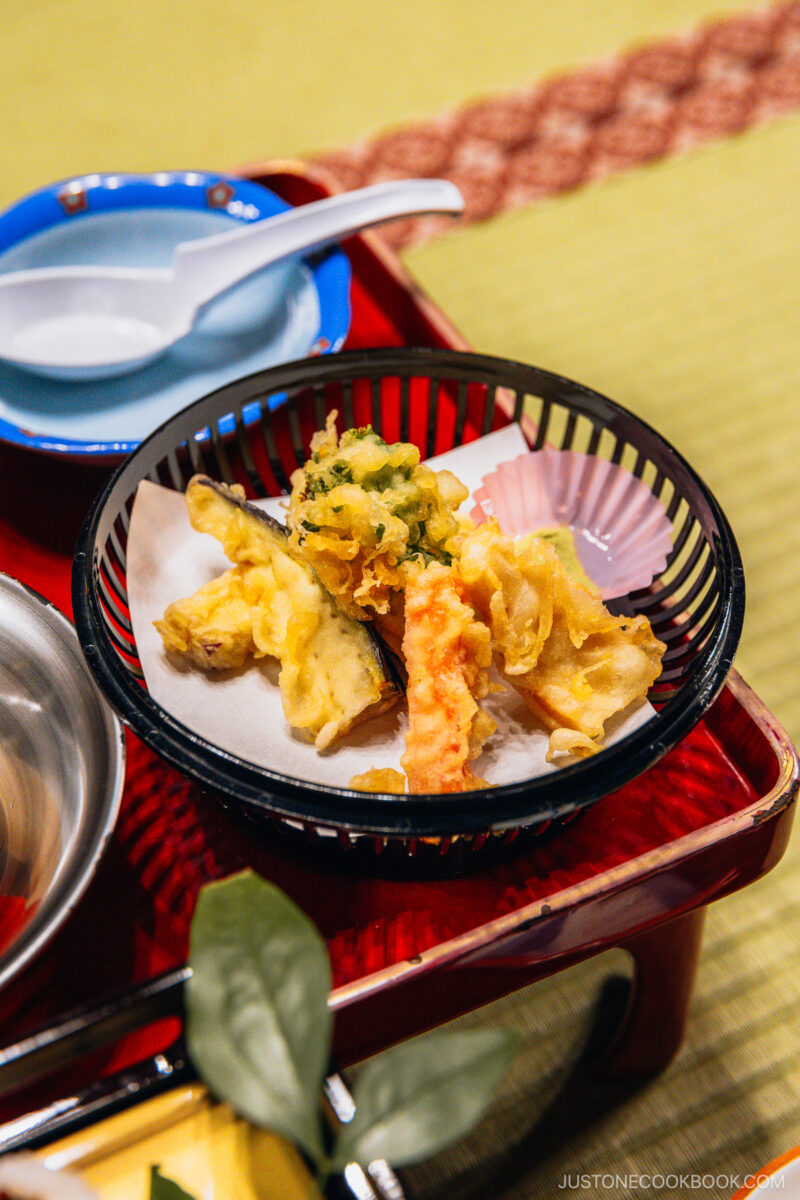

Dinner is served in a large hall at the front of the temple, decorated with stunning historical art and calligraphy. The food is known as shojin ryori, a style of plant-based cuisine cooked in Buddhist temples. It features a host of small dishes, including tofu, tempura, stews, noodles, and rice. Despite there being no meat or fish, there was plenty of food to fill you up and light to keep you feeling good throughout the evening.
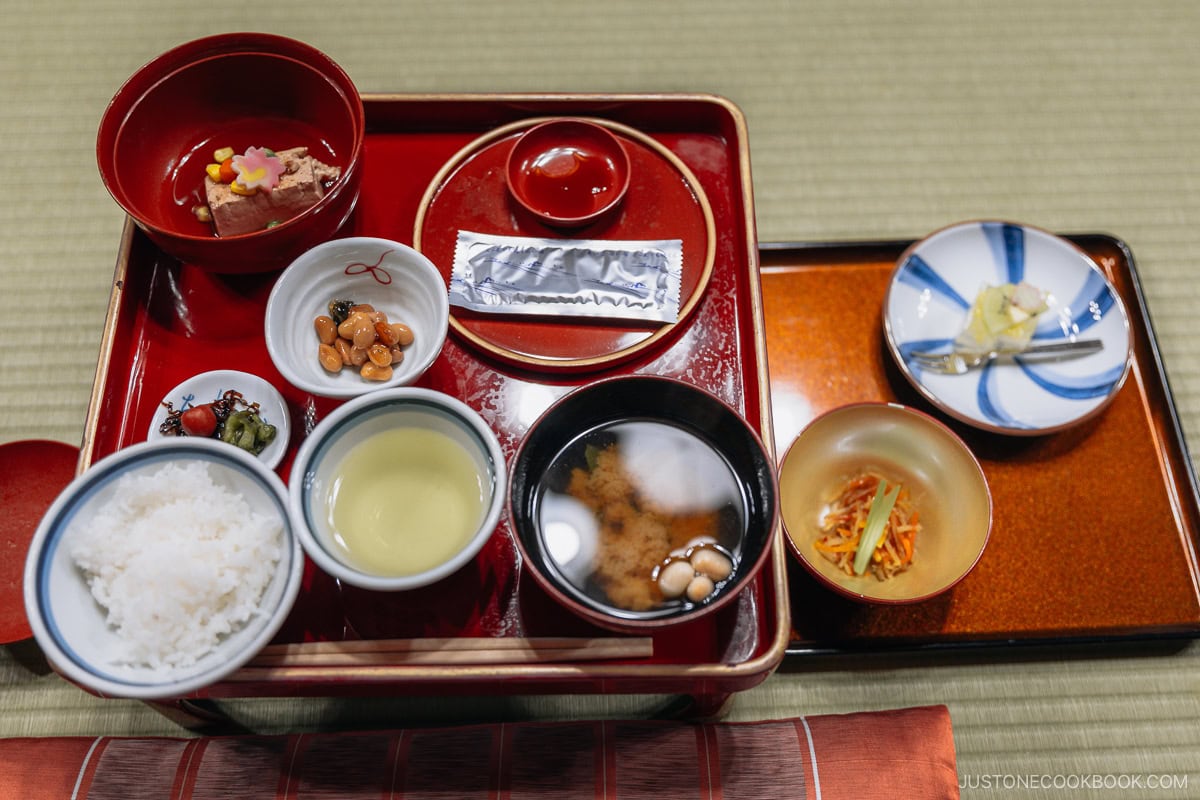

The following day, there is a morning prayer at 6 am (attendance is optional), followed by breakfast at 7 am. It’s a classic Japanese-style breakfast with rice, natto, miso soup, and additional vegetables.
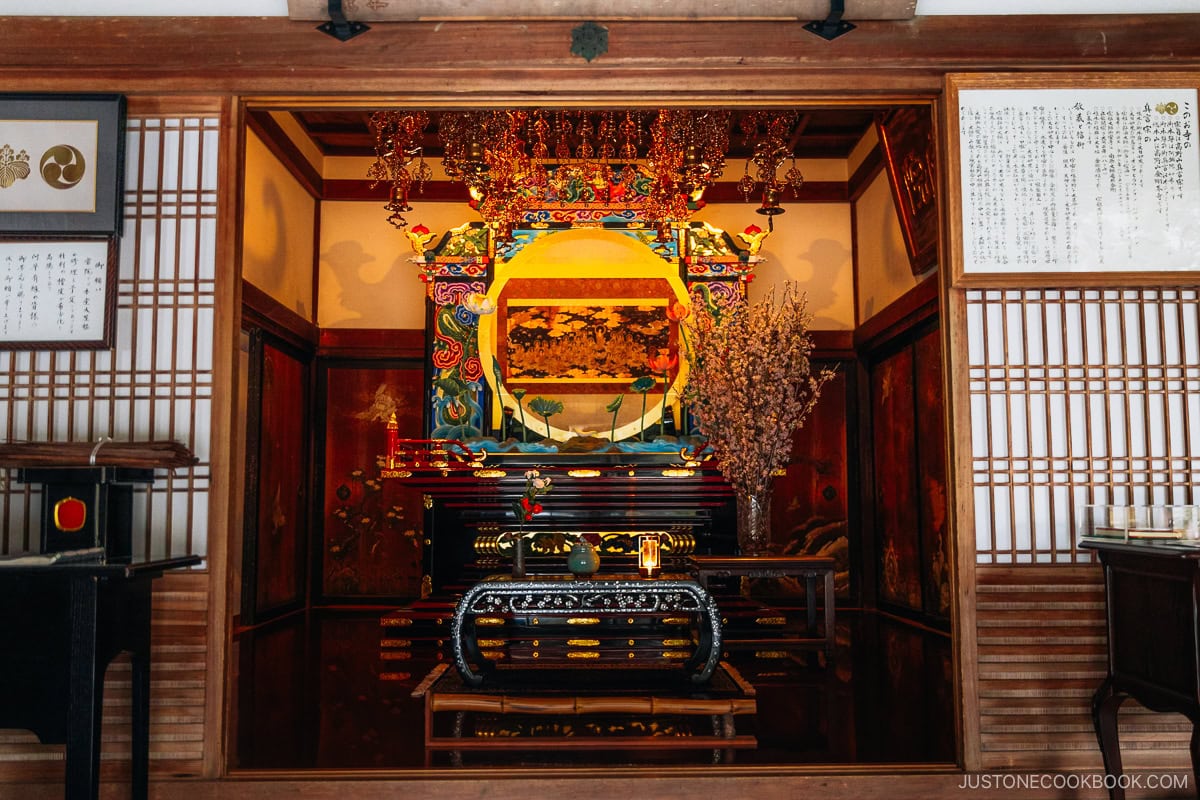

Check-out is at 9 a.m., so there’s enough time to relax and explore more of the temple’s treasures.
While the temple acts like a hotel, it’s important to follow the rules and remember that it is a place of sacredness and spirituality. Noise should generally be kept to a minimum, and photos of the monks and Gomada hall should be prohibited.
Okunoin
After Daishi’s passing in 835, he was so revered that he was buried in Okunoin.
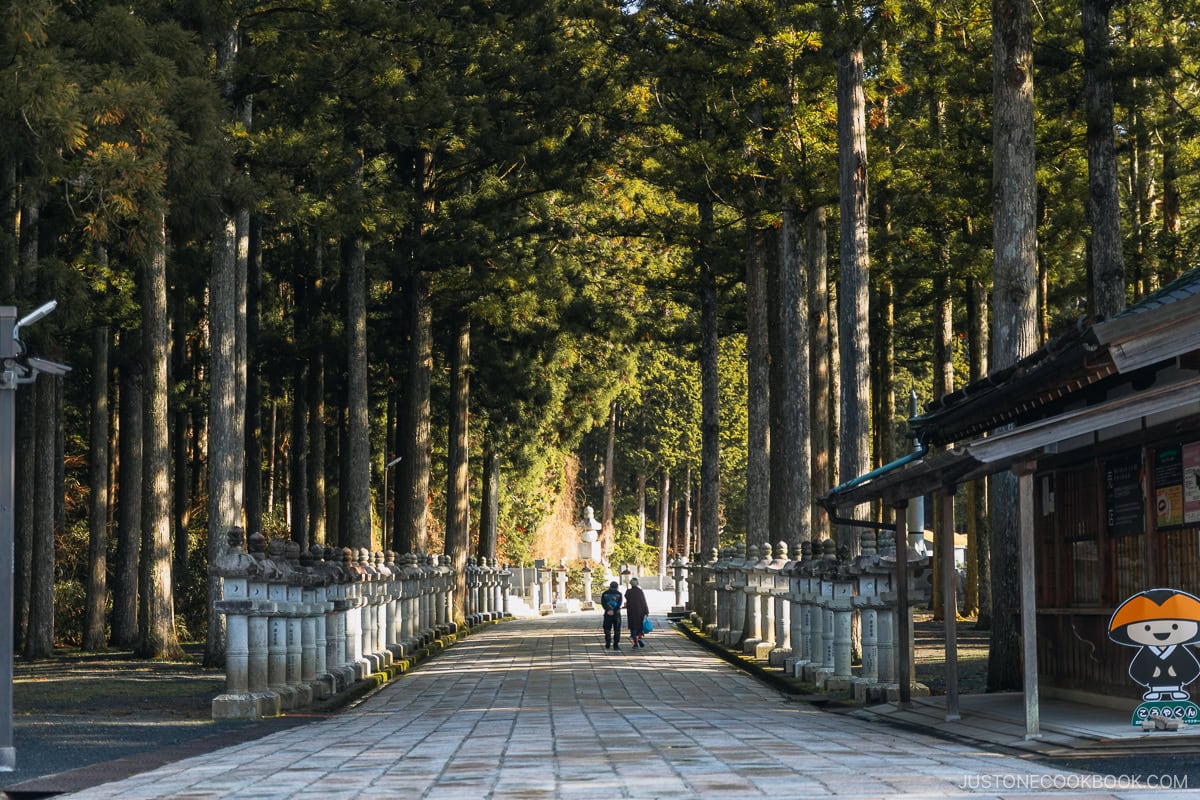

Okunoin is Japan’s largest cemetery, with over 200,000 gravestones spanning approximately a bit over 1 mile (2 km). Many of the gravestones are of monks and feudal lords, whom many wished to be close to Daishi after their passing to receive salvation.
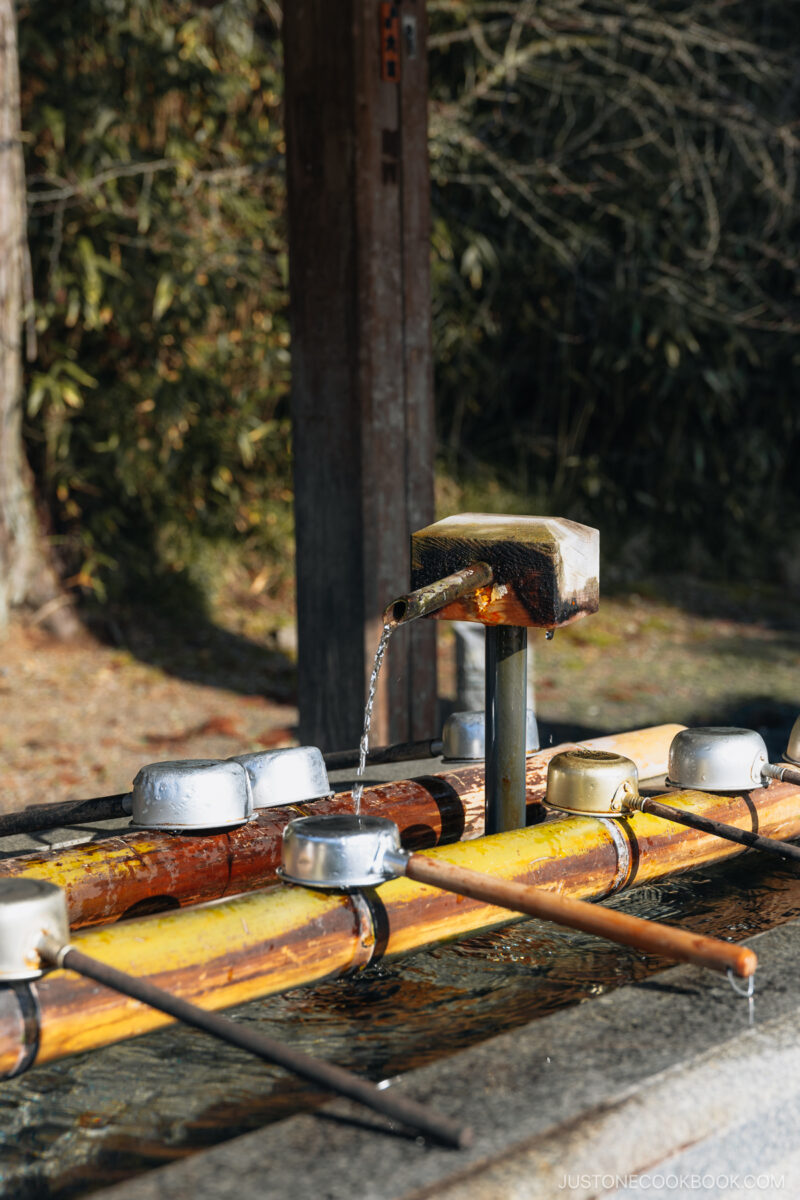

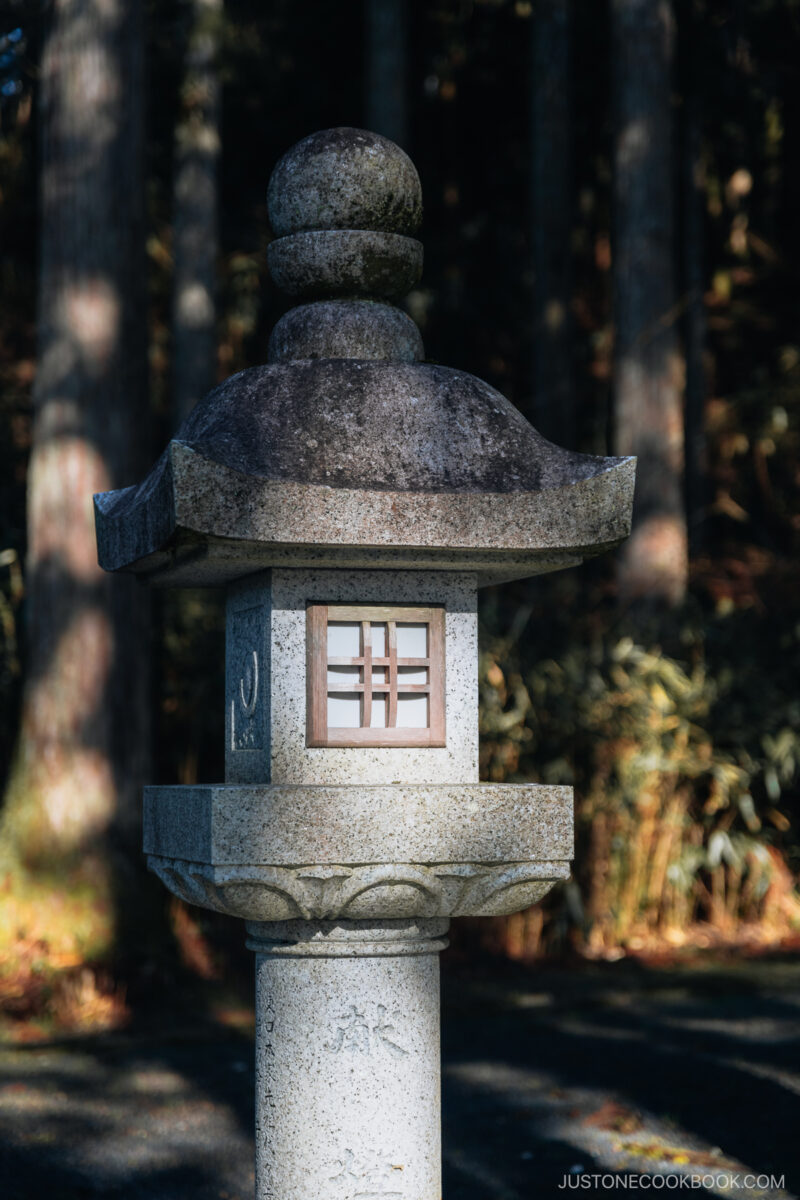

The entrance is marked by the Ichinohashi Bridge (first bridge), which is lined by towering cedar trees. Just before crossing, it is appropriate to bow to pay respect to Daishi. There is a second bridge in front of the Okunoin-mae bus stop, which also has a parking lot, making it easily accessible. This route is also shorter by about one kilometer.
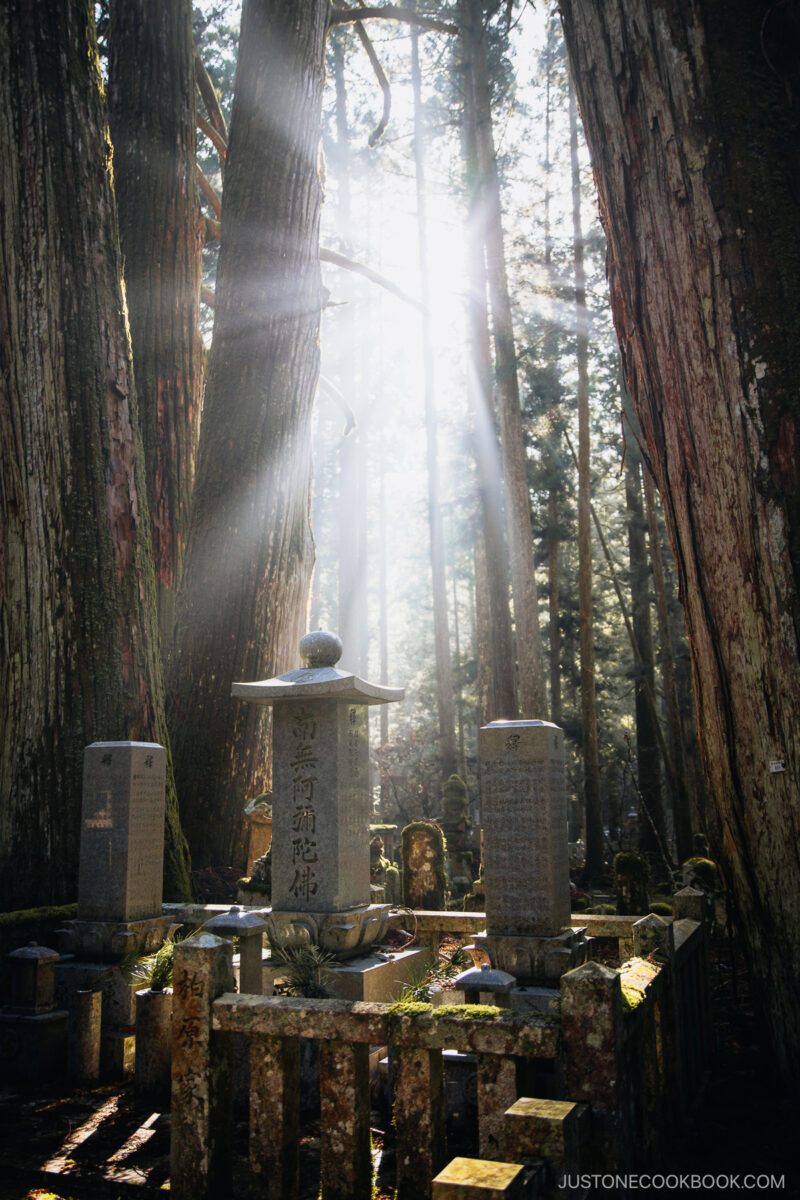

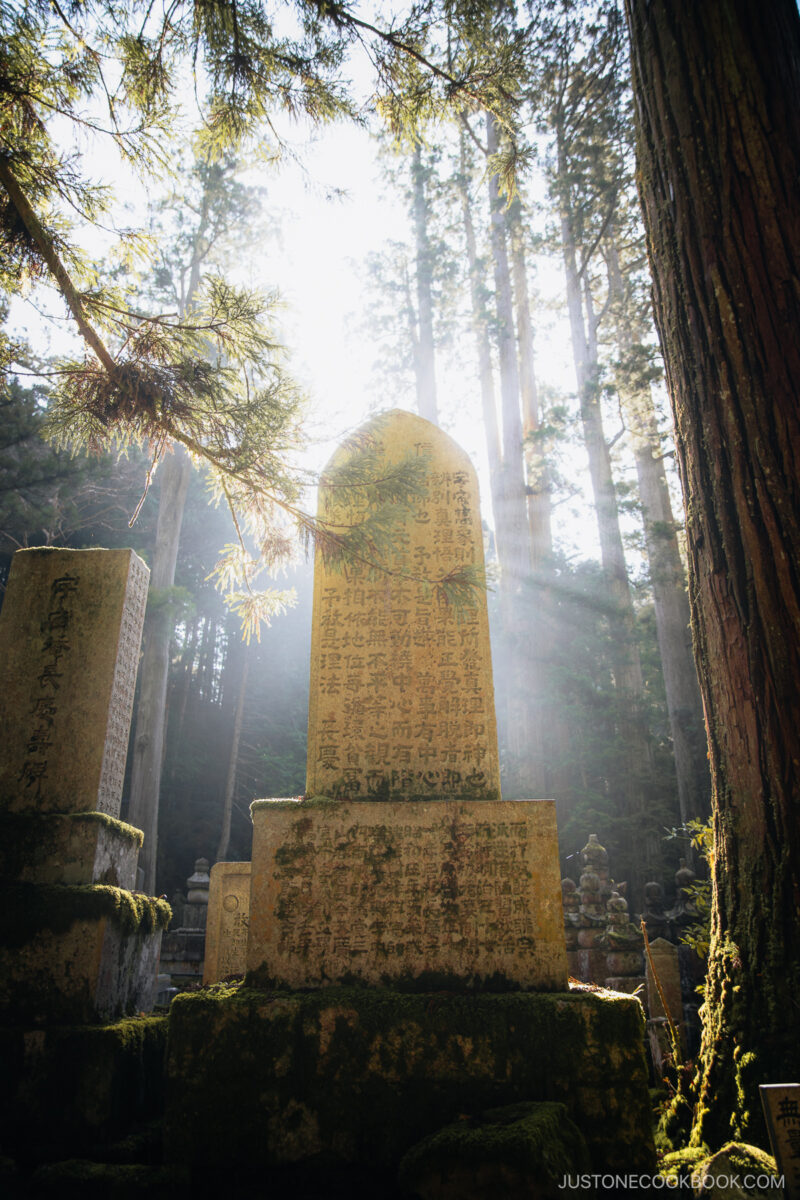

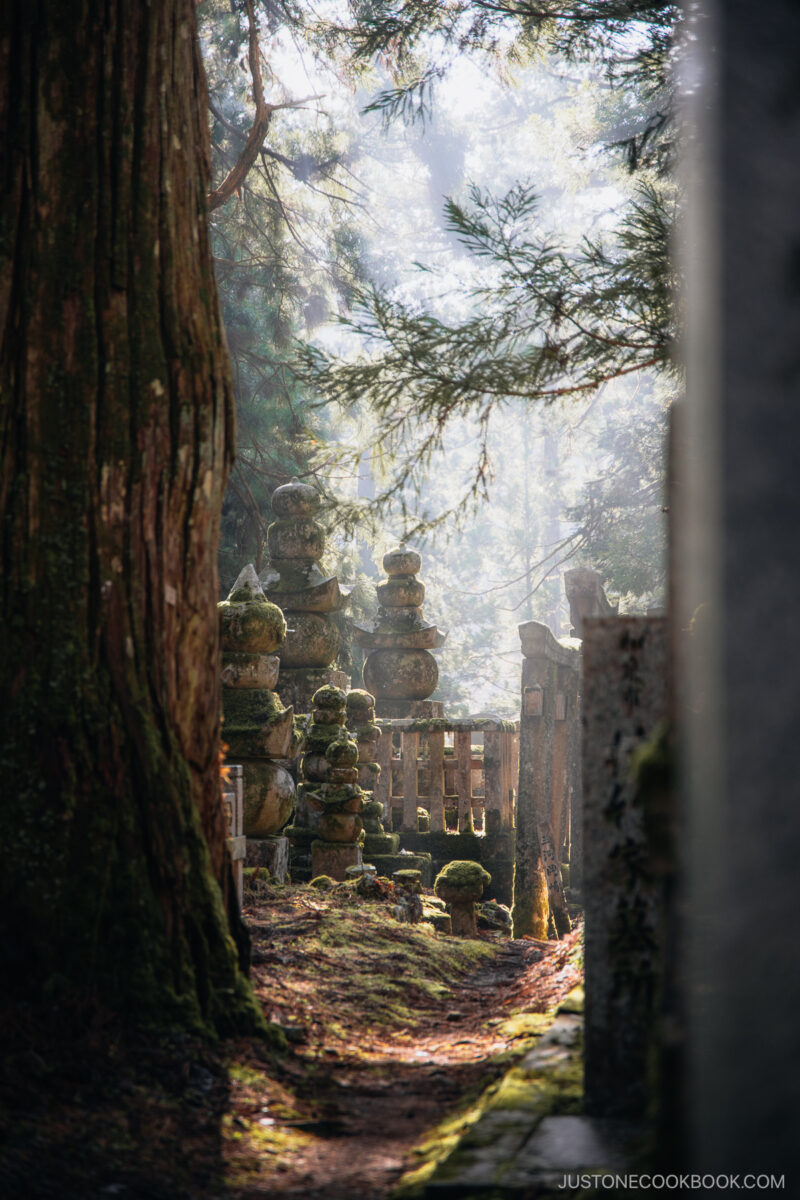

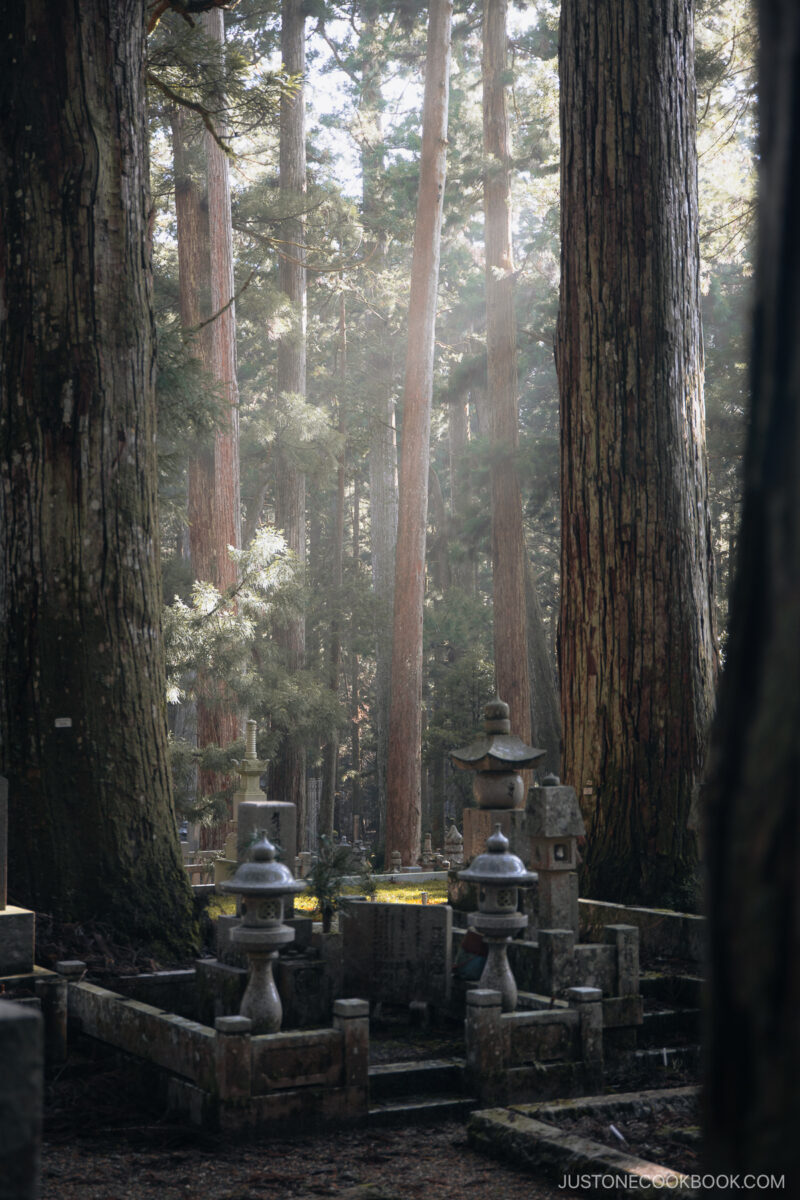

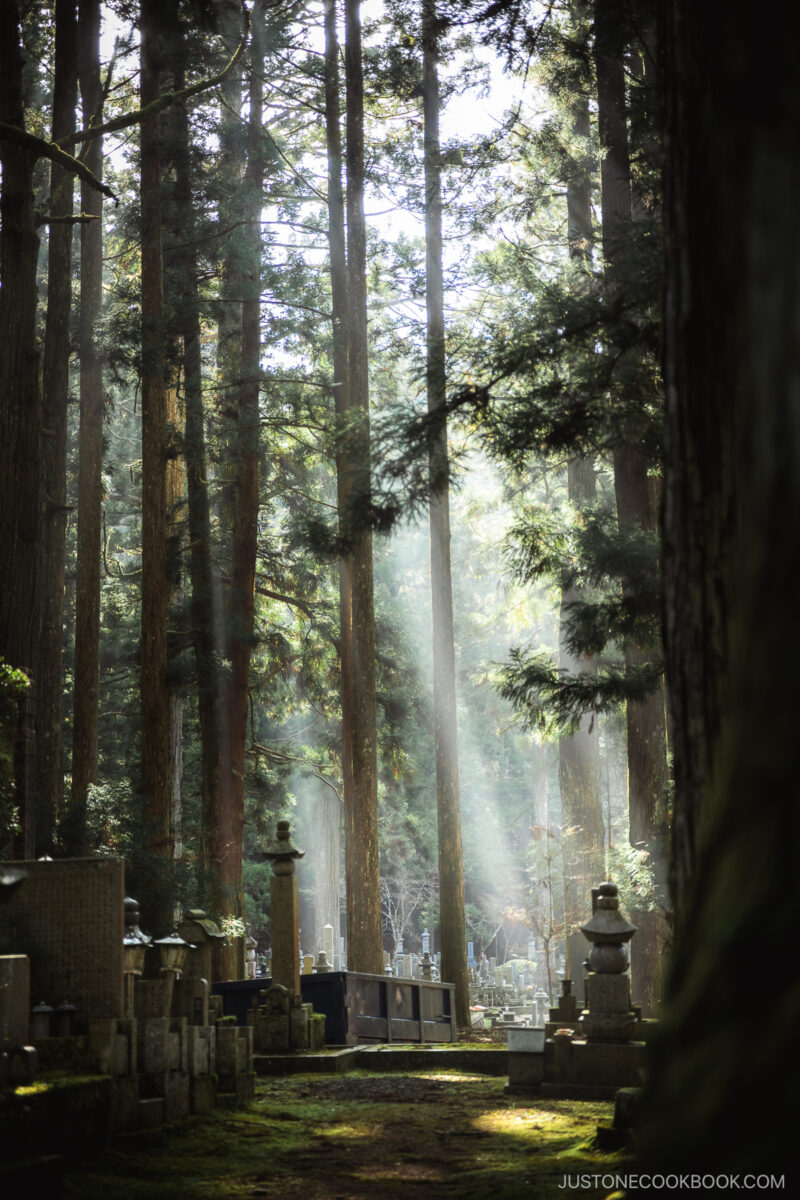

I visited early in the morning, hoping to catch the morning sunlight filtering through the cedar forests, and was not disappointed.
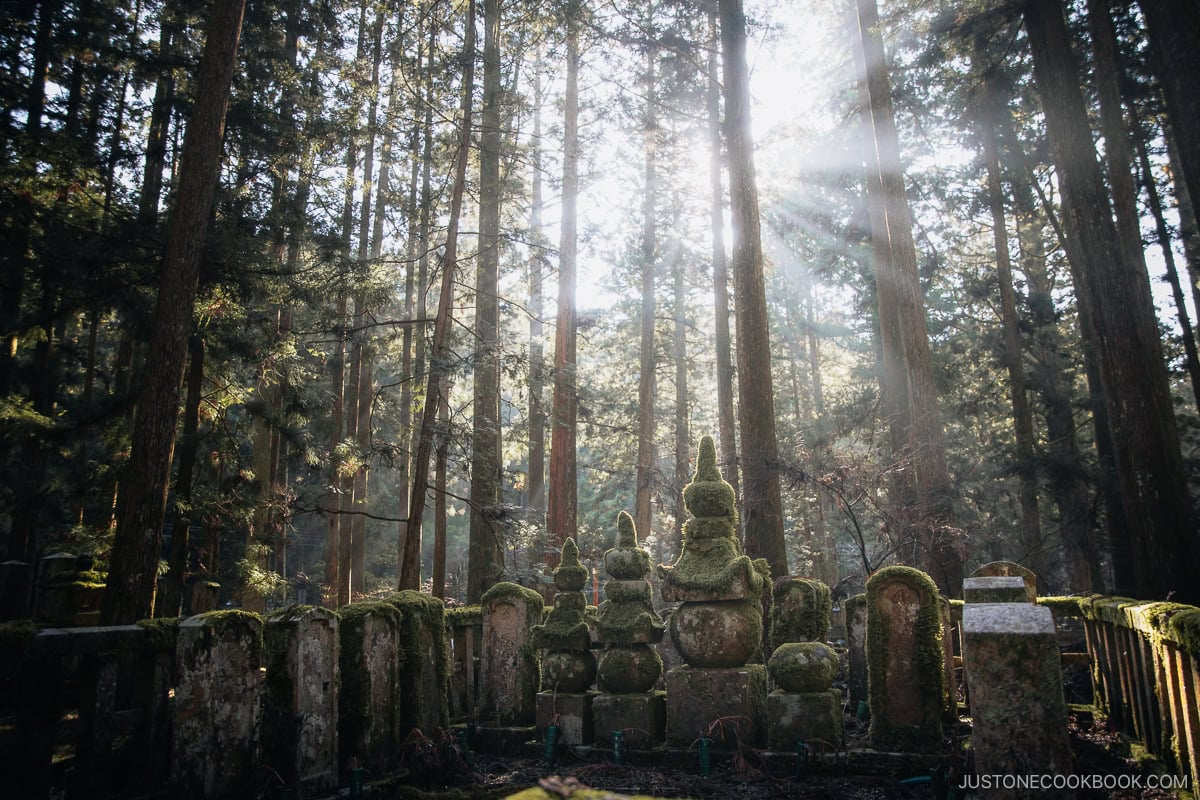

Walking through a cemetery might be a little scary, but it was anything but. The area was one of the most serene, tranquil, and awe-inspiring places I have visited. Walking through the cemetery, you can feel the history of Koyasan, breathing through the trees, echoing in the whispers of the wind, with each moss-covered gravestone telling a tale of the past.
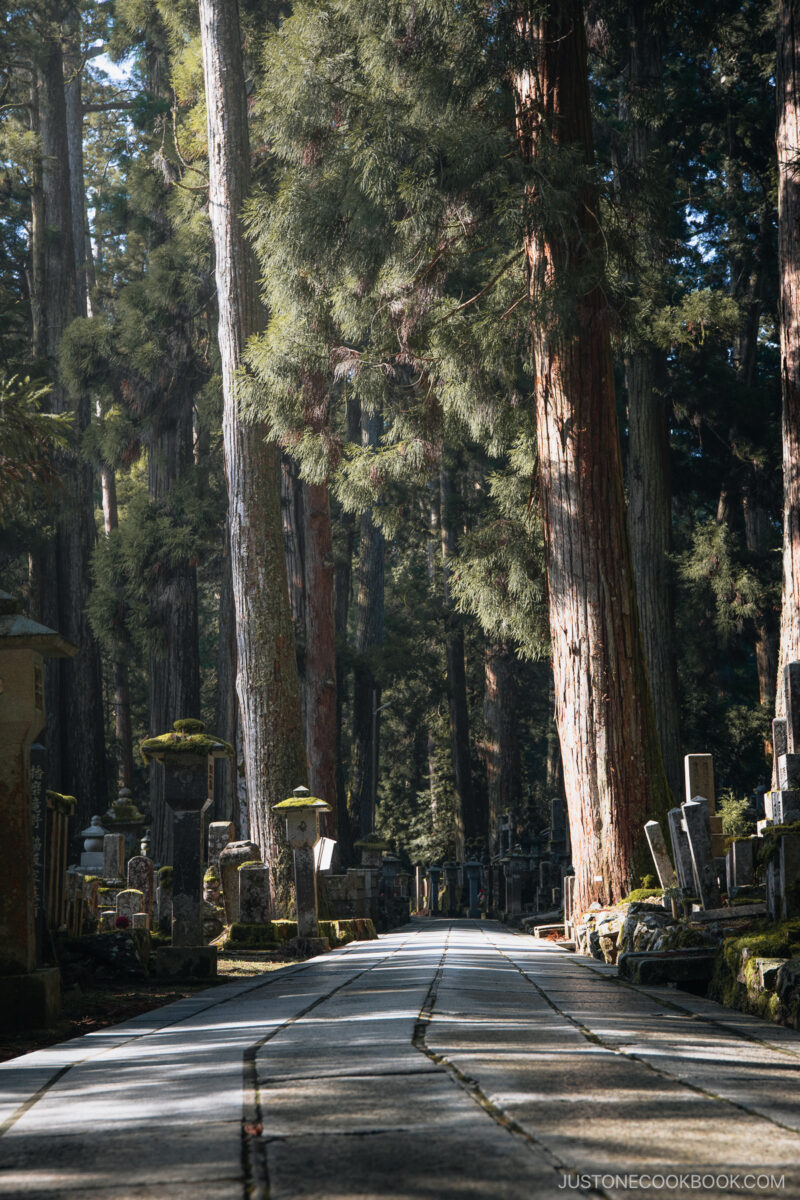

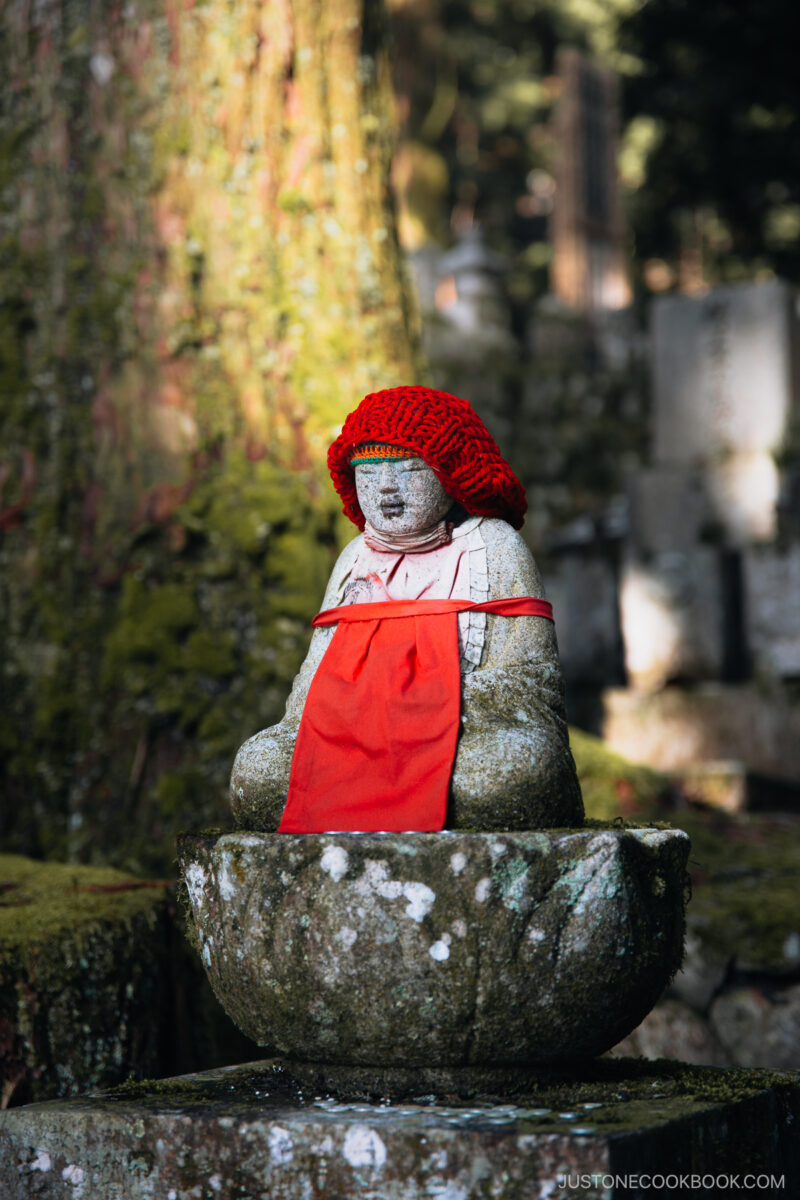



Traveling deeper into the cemetery, you’ll find various torii gates, monuments, and Jizo statues. These embody O-Jizo-Sama, the guardian deity of children and travelers who protect children and the souls of the deceased. Many of them also wear red bibs, as it is thought that the color red helps ward off evil.
Gokusho Offering Hall
You will eventually reach Gokusho Offering Hall, with a line of Mizumuke Jizo (Water Covered Jizo), where you throw water over the statues to pray past family members. Morning prayers were taking place, so I decided not to take any photos.
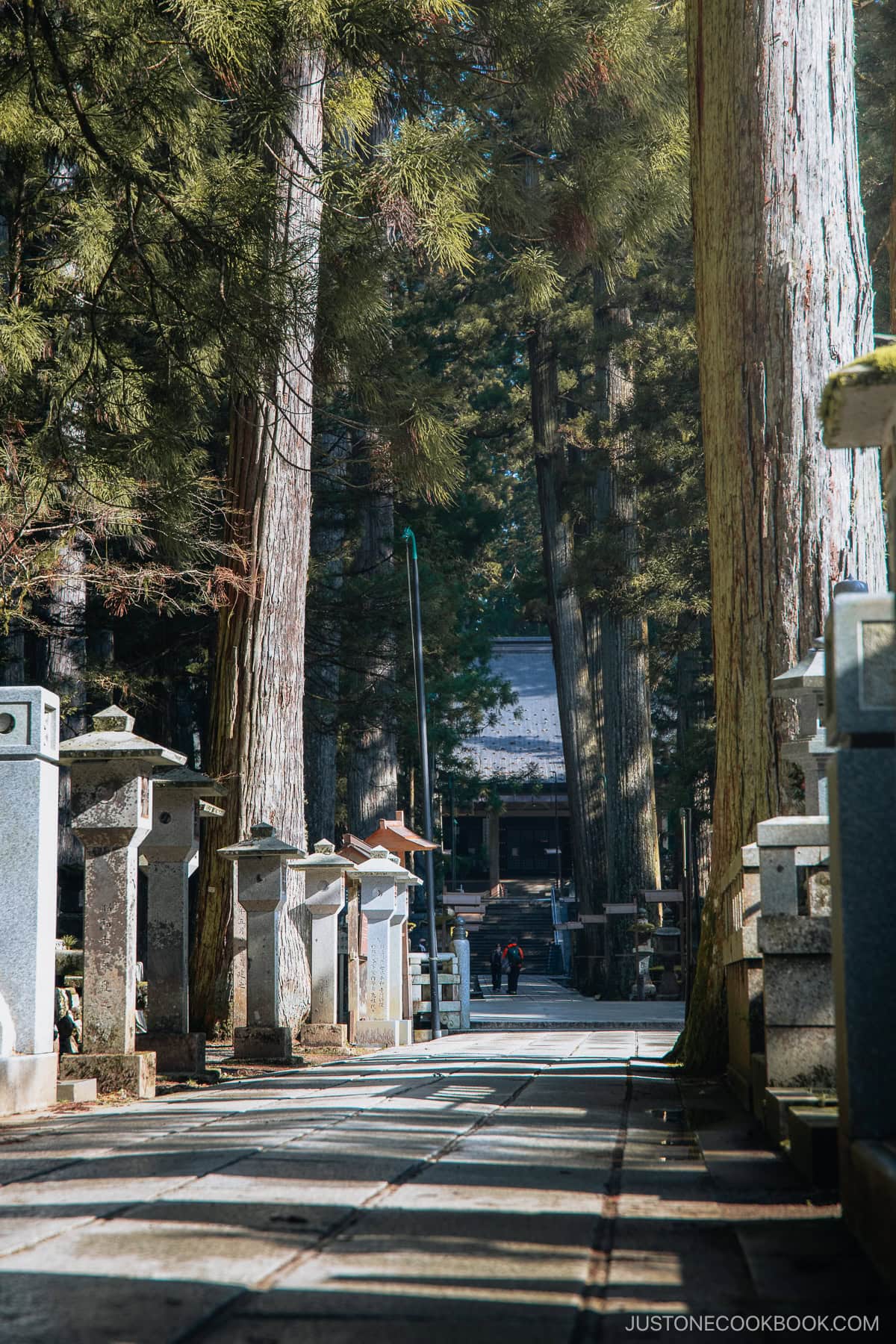

A little further on is Gobyobashi Bridge, where you can find the rest of Okunin. Beyond this point, photography and food and drinks are prohibited.
Here, you can find the main hall, Torodo Hall (Hall of Lamps). The interior is decorated by 10,000 eternally lit lanterns donated by worshipers and pilgrims. Two of these lanterns are said to have been lit for more than 900 years. Behind this lies Kobo Daishi’s Mausoleum, where he lies in eternal meditation.


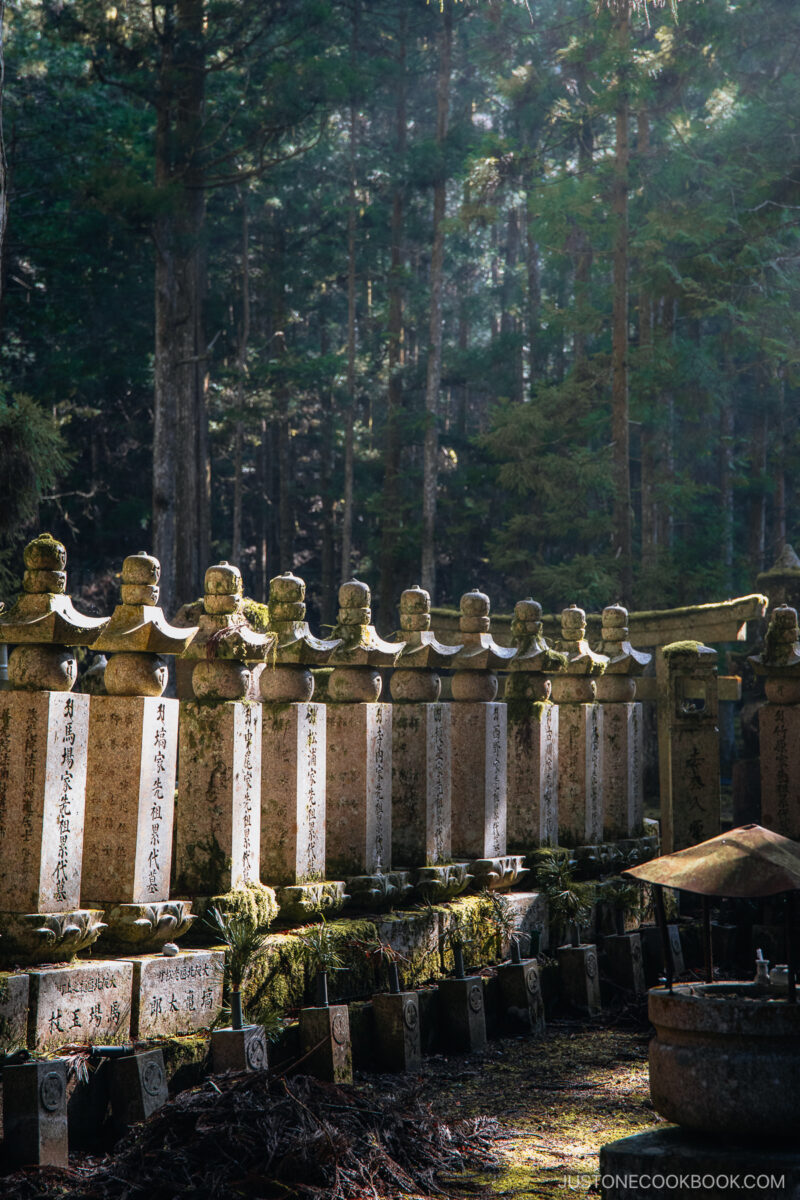

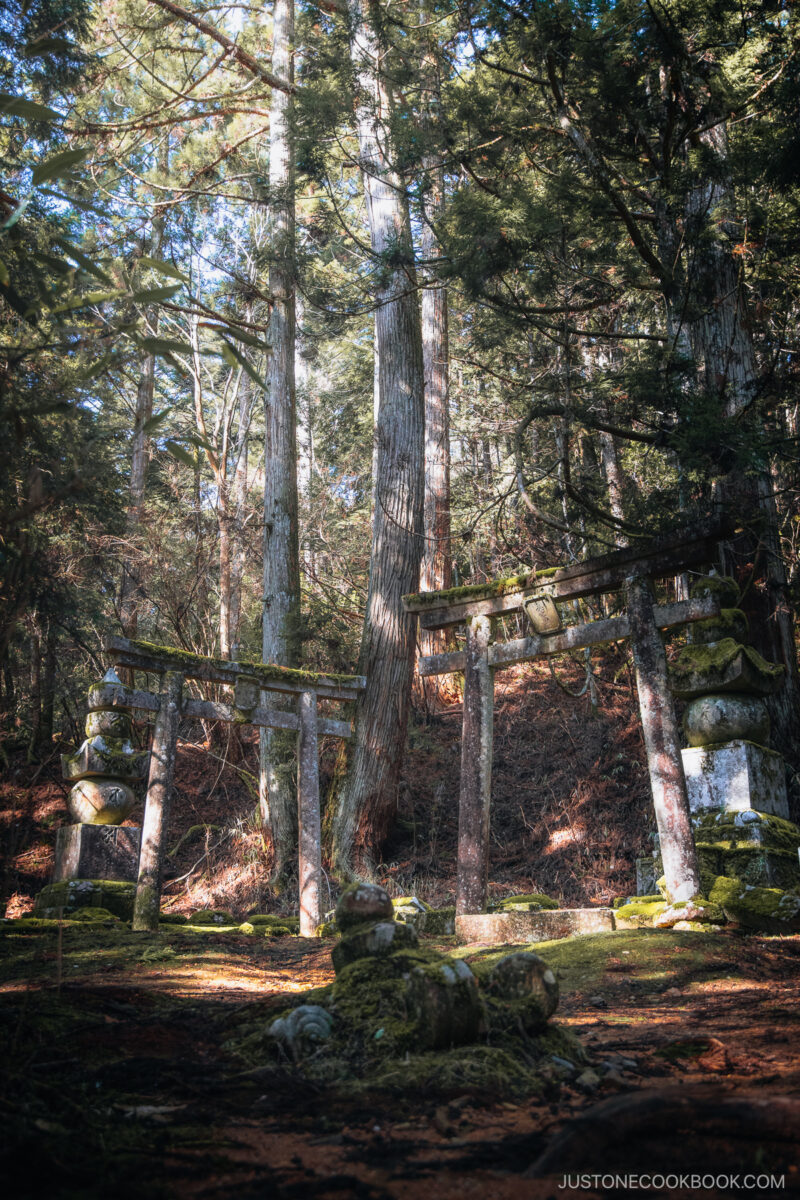

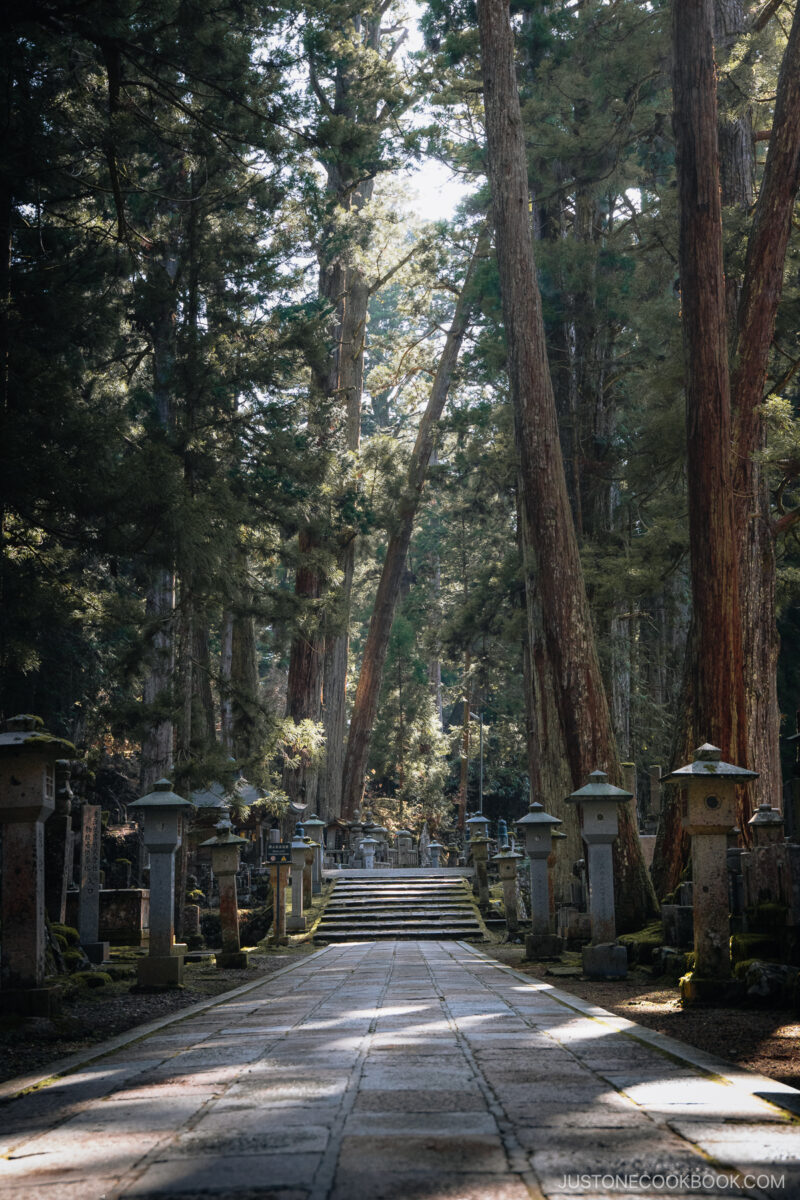

The cemetery is open 24 hours; however, some are not available in the early morning or evening. Depending on your temple stay, some may offer guided evening visits. You can also visit without a guide, but the area is very dark and not well-illuminated, so please be careful!
That’s it for our tour through Koyasan. Staying at a temple is one of the best ways to get an insight into the religious and spiritual world of Koyasan and Japan as a whole! Be sure to explore all the small little shrines and temples along the way!



